CDEP HISTORY ITALIAN RENAISSANCE
1/104
There's no tags or description
Looks like no tags are added yet.
Name | Mastery | Learn | Test | Matching | Spaced |
|---|
No study sessions yet.
105 Terms
Renaissance
Means rebirth of the art of classic antiquity. Man was freed from religious restraints of the Medieval times.
Florence
Where the Renaissance began
De Re Aedificatoria
Most important of the architectural treatises by Leon Battista Alberti (1452-1485).
Humanism and Secularism
The two ideals that were pursued by artists and architects.
Humanism
An ideology that believes that humans had been given the ability for rational thought to some meaningful end.
Secularism
The weakening of the spiritual and political leadership of the Church.
Guilds
Regulated and standardized crafts; when one is not a member of a guild then one is not fit for practice.
Medici
A prominent family of Florence. They acquired great wealth in banking and spent money on architects and artists.
The Gate of Paradise
Ghiberti
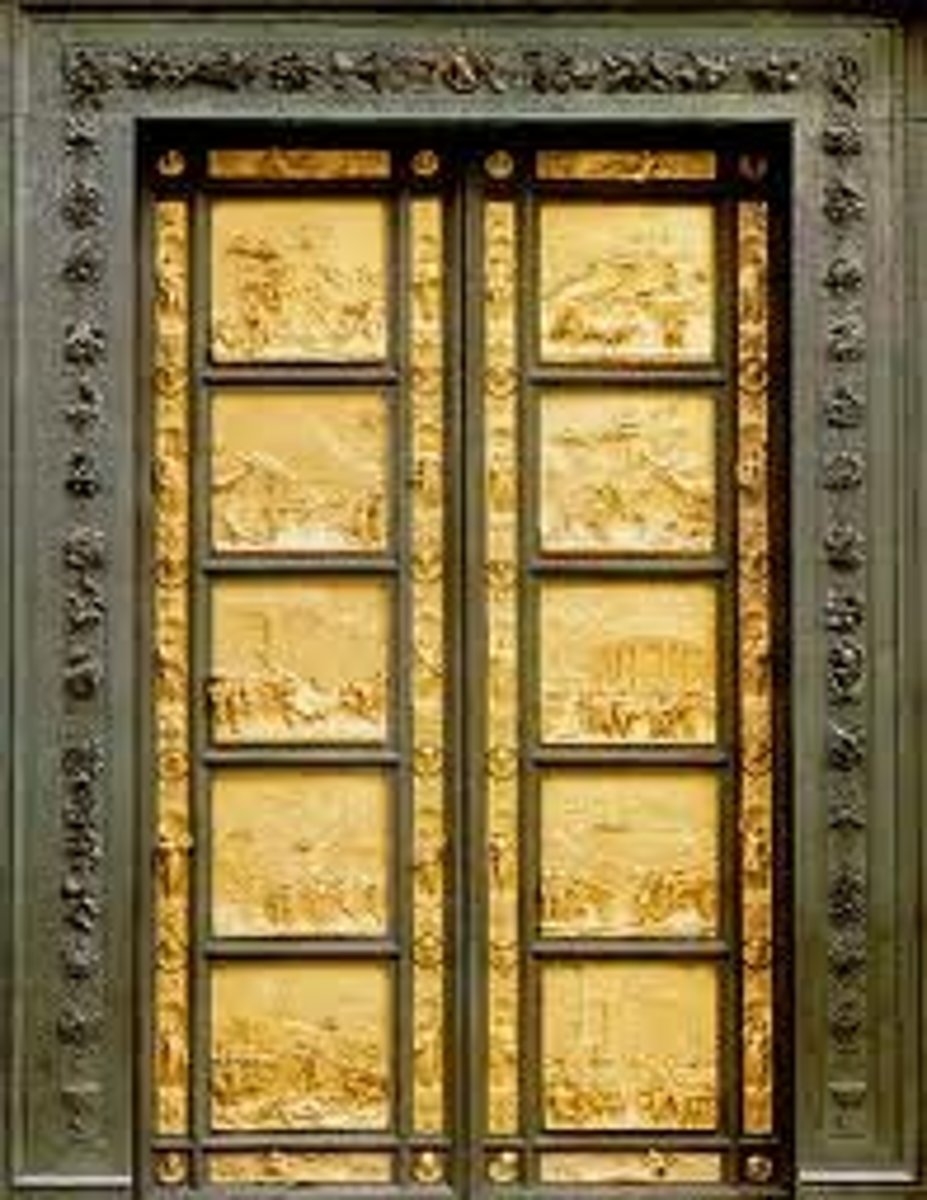
Early Renaissance period
When did linear perspective developed?
Leonardo da Vinci
Adoration of the Magi by
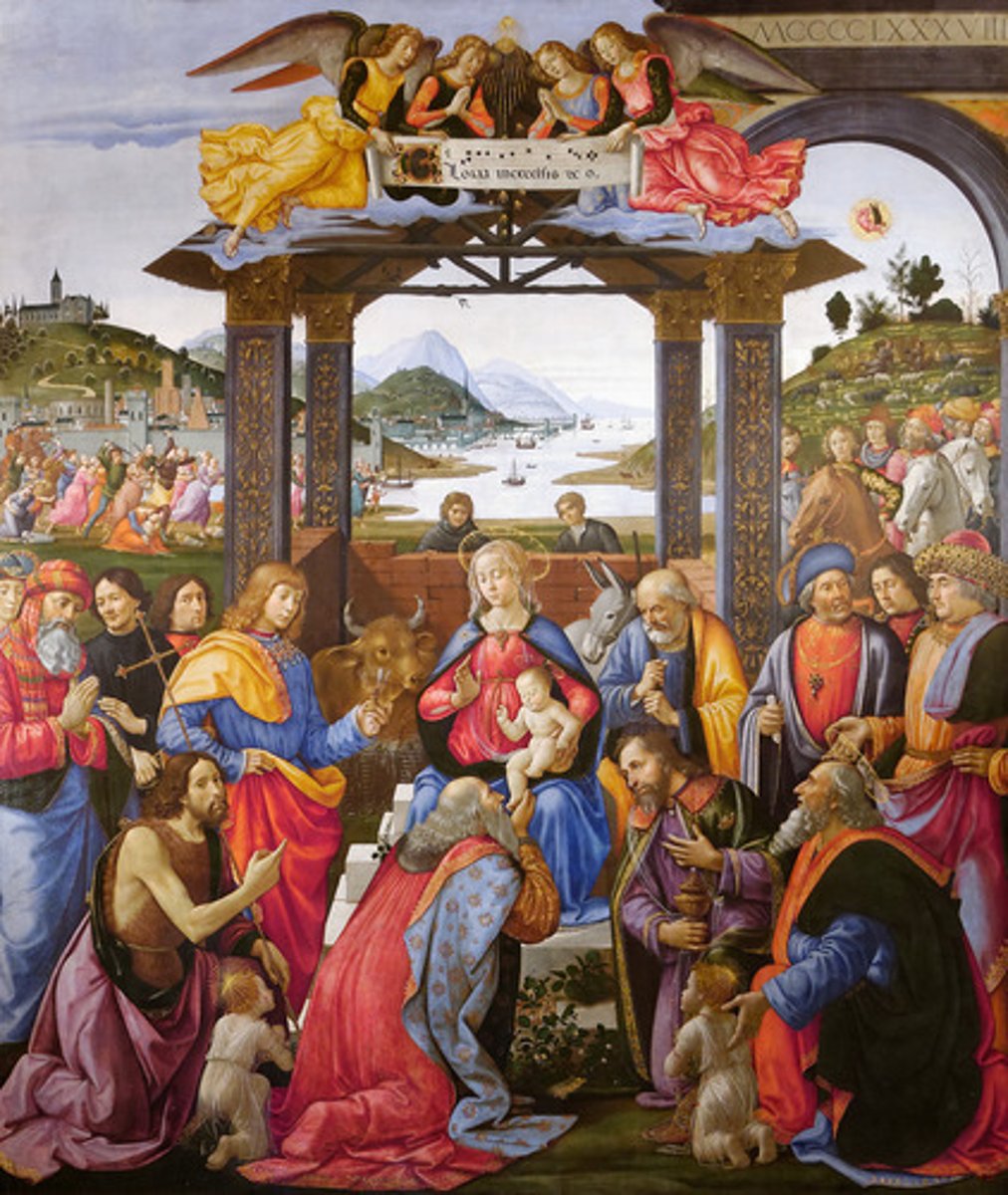
Chiaroscuro
The use of light and dark to achieve a heightened illusion of depth. The use of shadows to give massing instead of outlines.
Foreshortening
Method of rendering a specific object in depth. The distortion that is seen by the eye when an object is viewed at a distance.
Andrea Mantegna
Dead Christ by
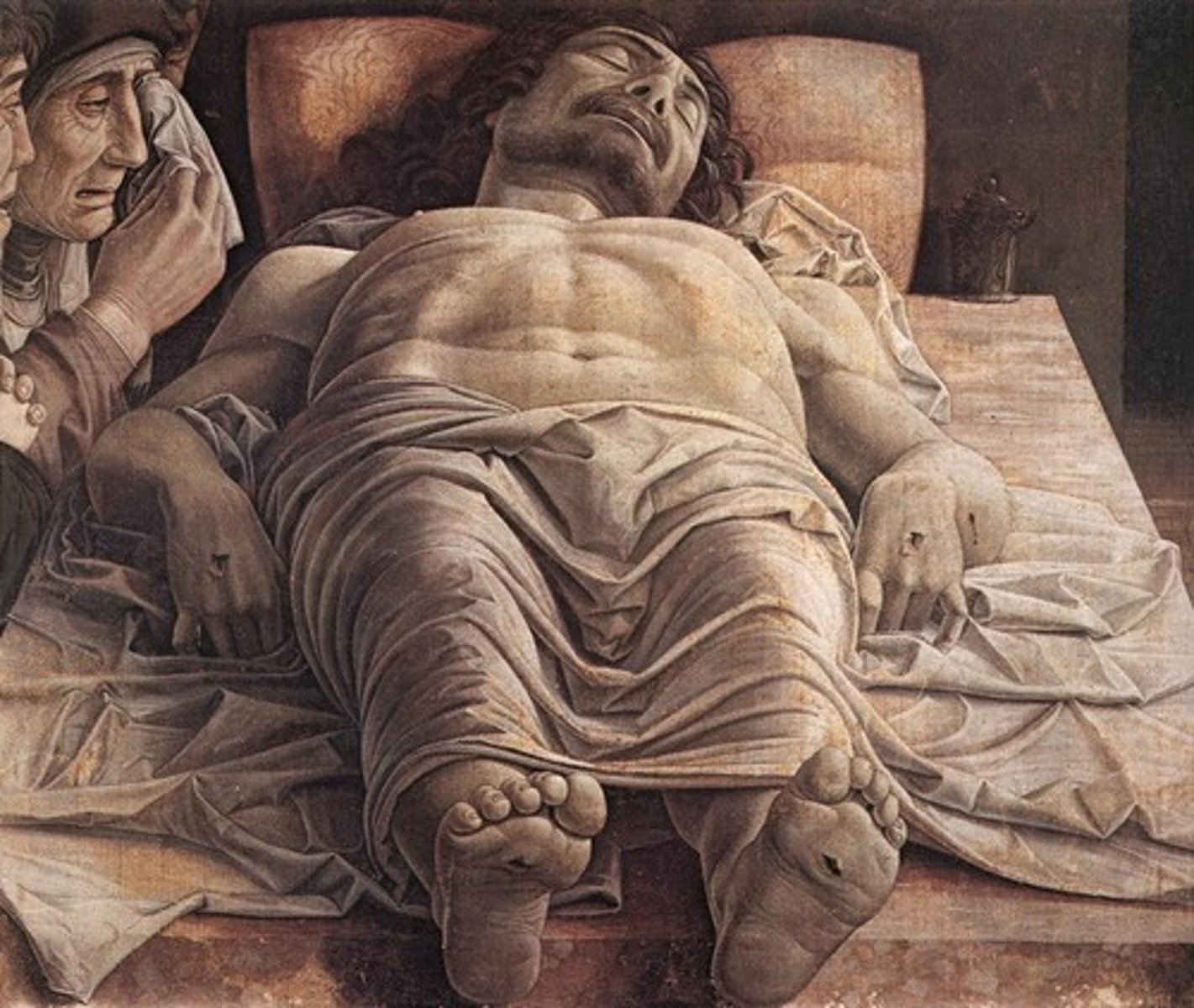
Giotto
The Death of St. Francis by
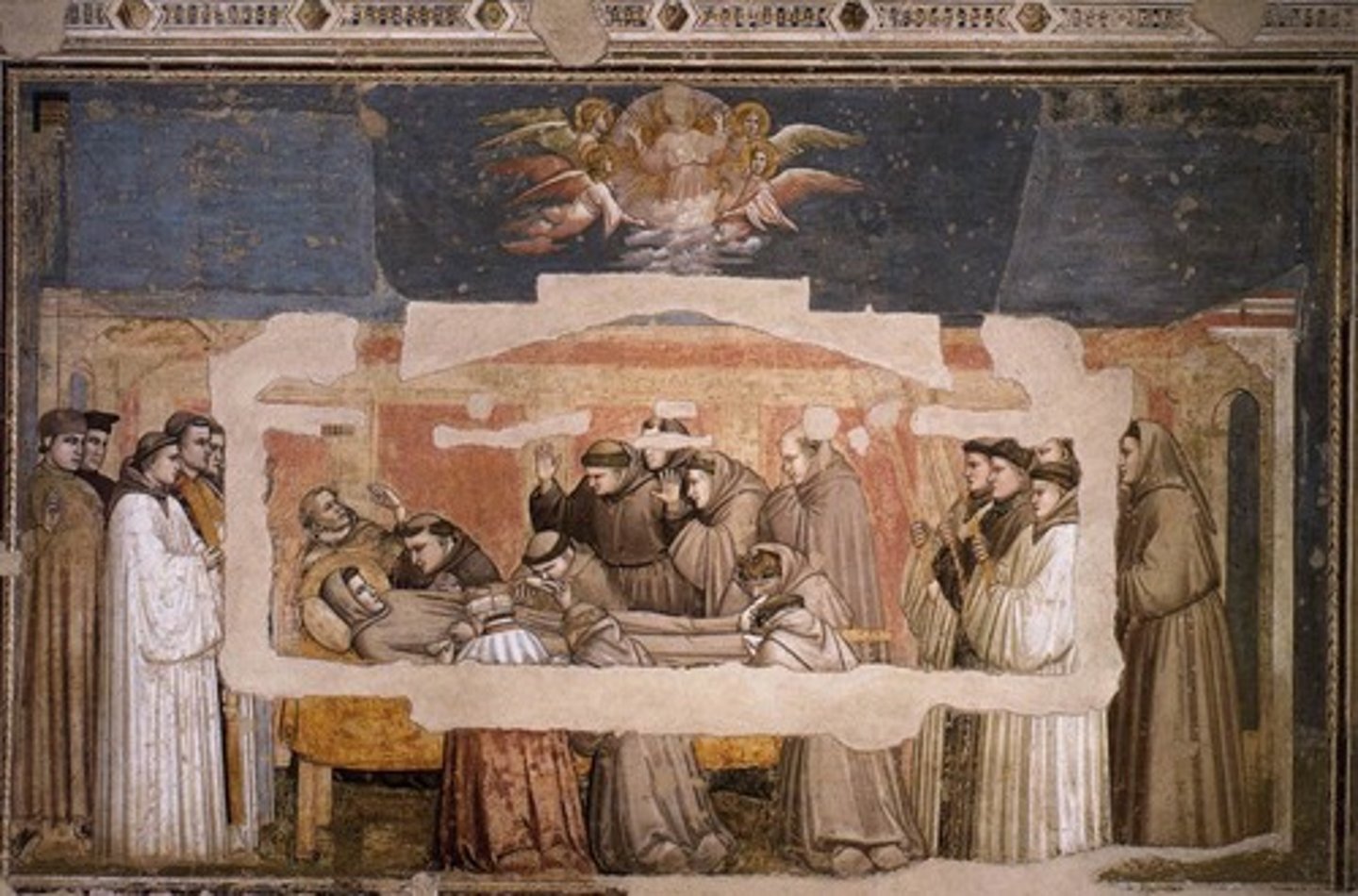
Masaccio
The Expulsion From Eden by

Giotto di Bondone
The founder of Renaissance painting. He is known as the first naturalistic painter of Italy.
Masaccio, Tomaso Guidi
A disciple of Giotto. 1st great painter of the Italian Renaissance.
Masaccio, Tomaso Guidi
He created one of the best examples of chiaroscuro which was a painting named The Expulsion from Eden.
Fra Angelico
A Dominican monk who created purely religious art. He made use of luminous, gem-like colors and diffused light in slender
forms.
Fra Angelico
The Annunciation by
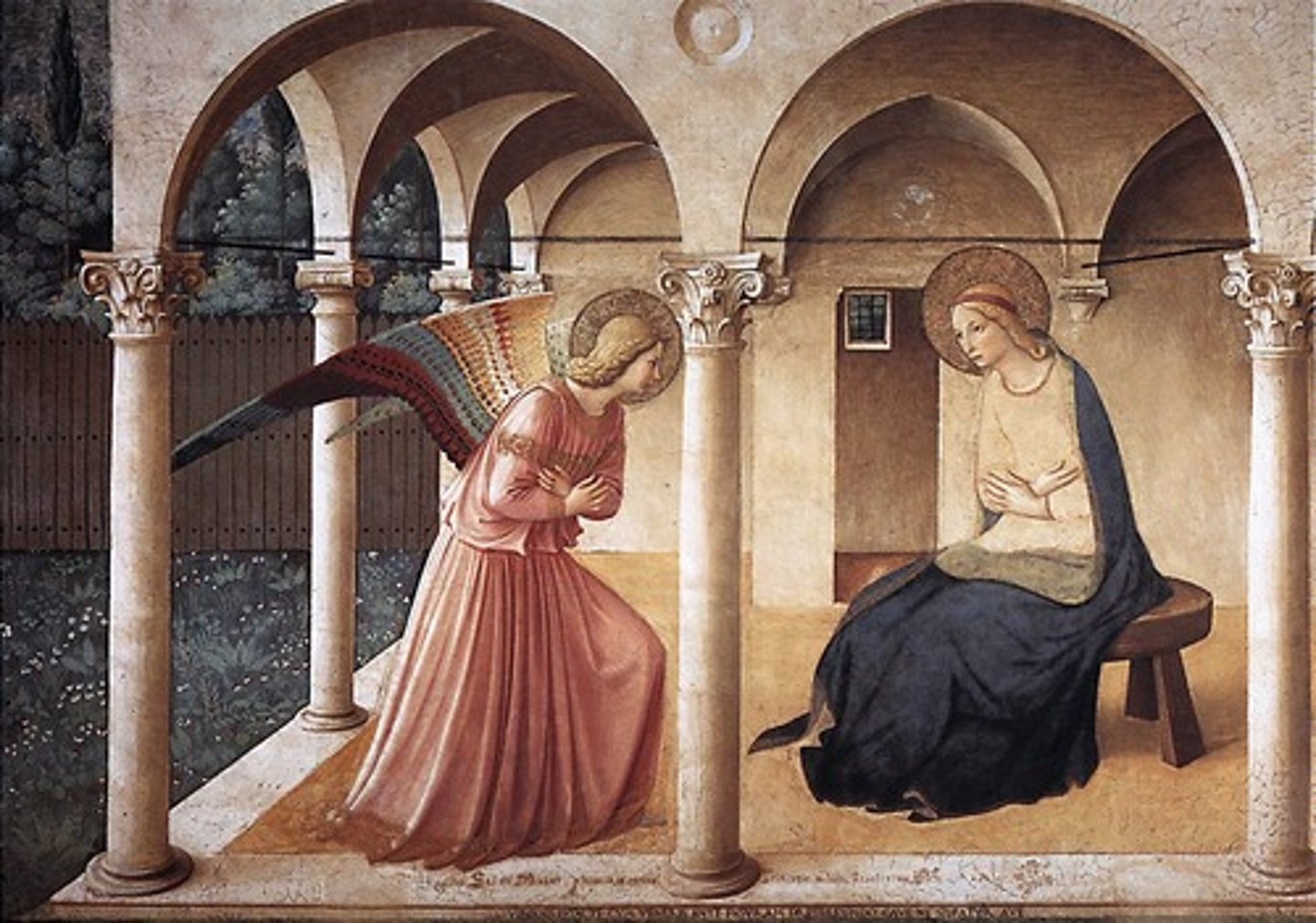
Fra Filippo Lippi
A complete antithesis of Fra Angelico; he was also a monk but
was dismissed because of abducting a nun.
Fra Filippo Lippi
Madonna and Child by
Alessandro Botticelli
Primavera The Birth of Venus by

Alessandro Botticelli
Renaissance painter who painted members of the Medici family, and the famed Birth of Venus.
Jan van Eyck
Flemish painter who was a founder of the Flemish school of painting and who pioneered modern techniques of oil painting
The Ghent altar piece
is a multi-tych composed of several artworks. When the altar piece is opened, his painting called Worship of the Lamb
could be seen wherein the subjects were dressed in Renaissance colors and he portrayed Jesus like the Pope. When the altar piece is closed, a painting of an Angel
visiting Mary in a contemporary setting could be seen on the middle register.
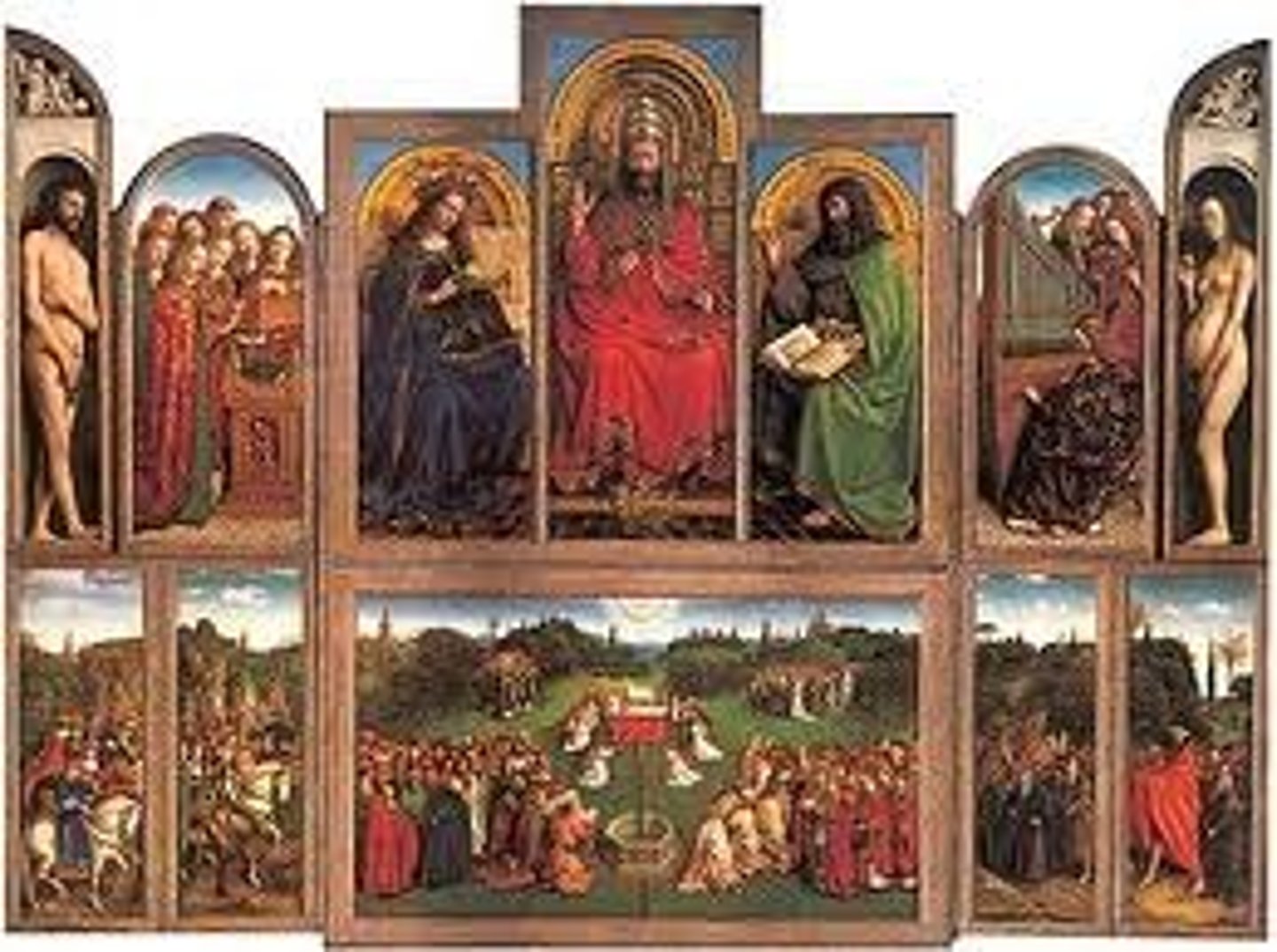
Grisaille
The use of all grey tones to create a sculptural effect on paintings, as shown on the bottom register of the altar piece.
Donatello
David by
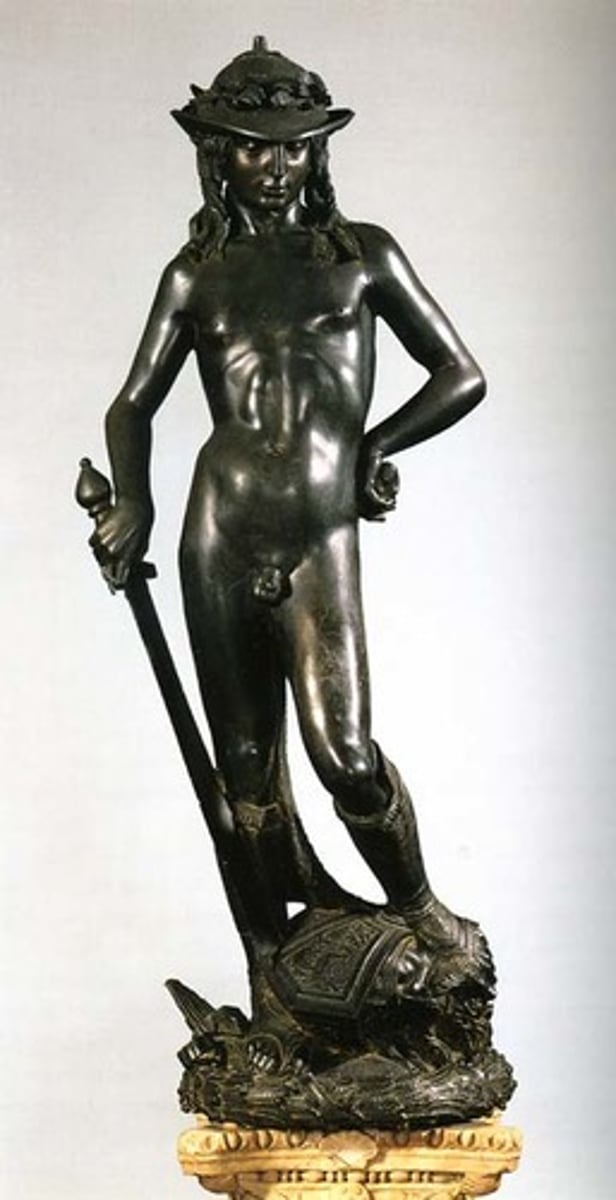
Donatello
Sculptor. Probably exerted greatest influence of any Florentine artist before Michelangelo. His statues expressed an appreciation of the incredible variety of human nature.
Lorenzo Ghiberti
A sculptor who did the north and east doors of the Baptistery of San Giovanni.
Filippo Brunelleschi
The Duomo by
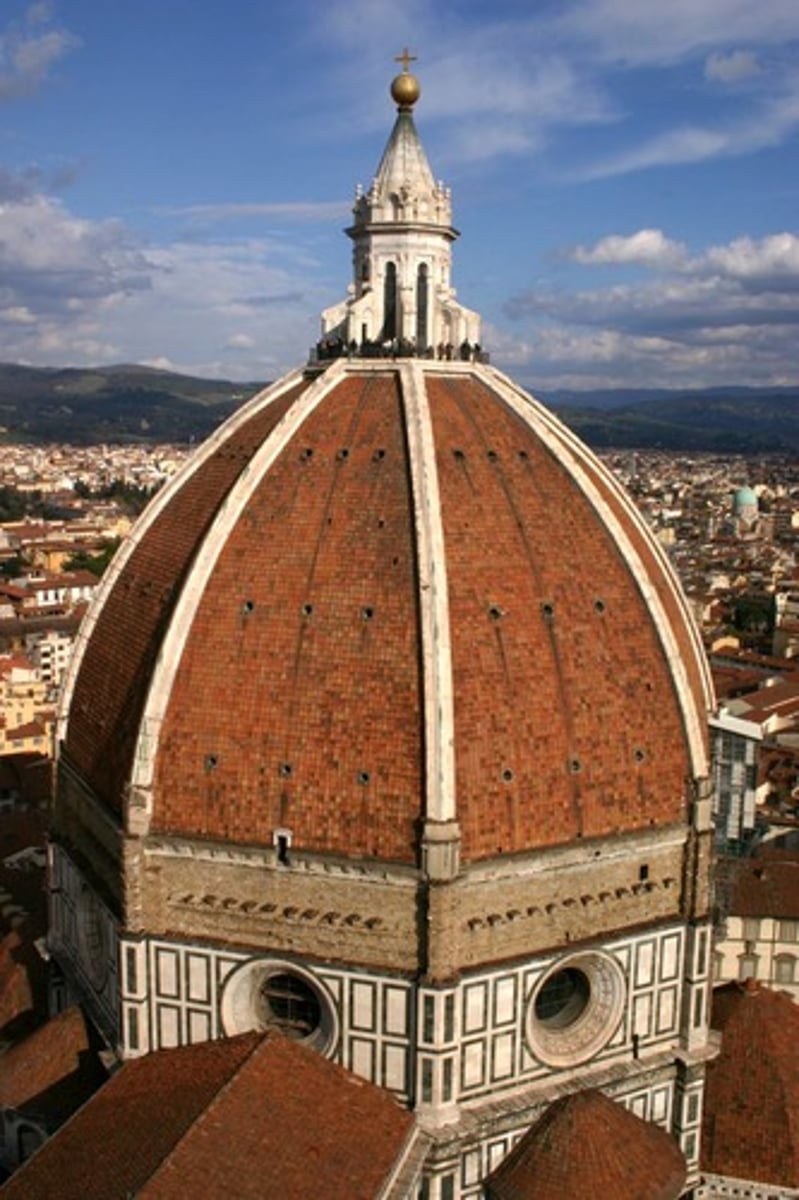
Ospedale Degli Innocenti
Foundling Hospital. It was commissioned by Giovanni Medici
for the poor.
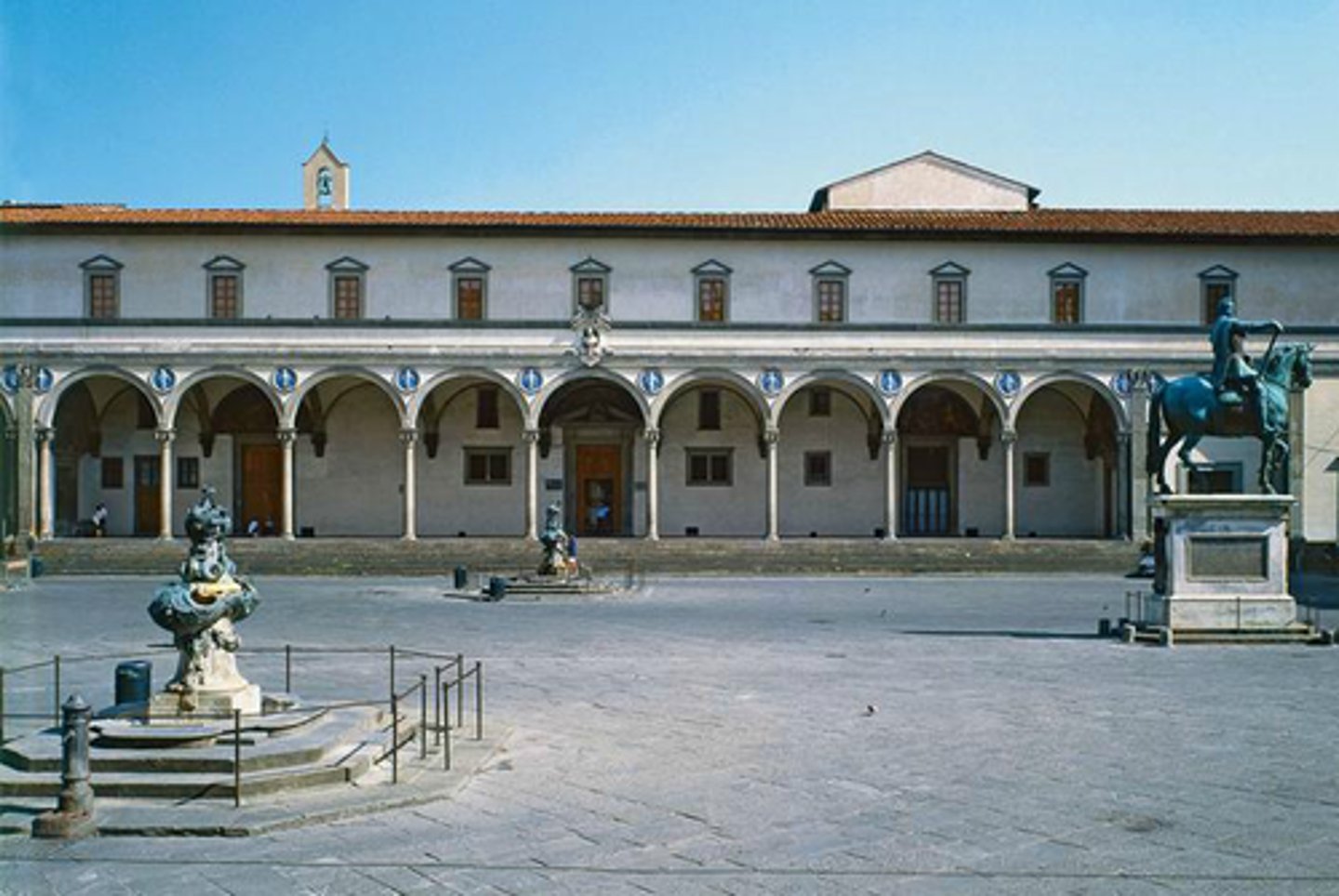
Tondo
A round arch wherein the space between the columns would form a perfect square.
Loggia
An arcading that opens to one side.
Piano Nobile
Translates to noble floor, and is the main receiving area.
Palazzo Rucellai by Leon Battista Alberti
Each level had a corresponding order. The 1st level featured Tuscan Columns, the 2nd level featured Corinthian Columns, and the 3rd level featured Ionic Columns.
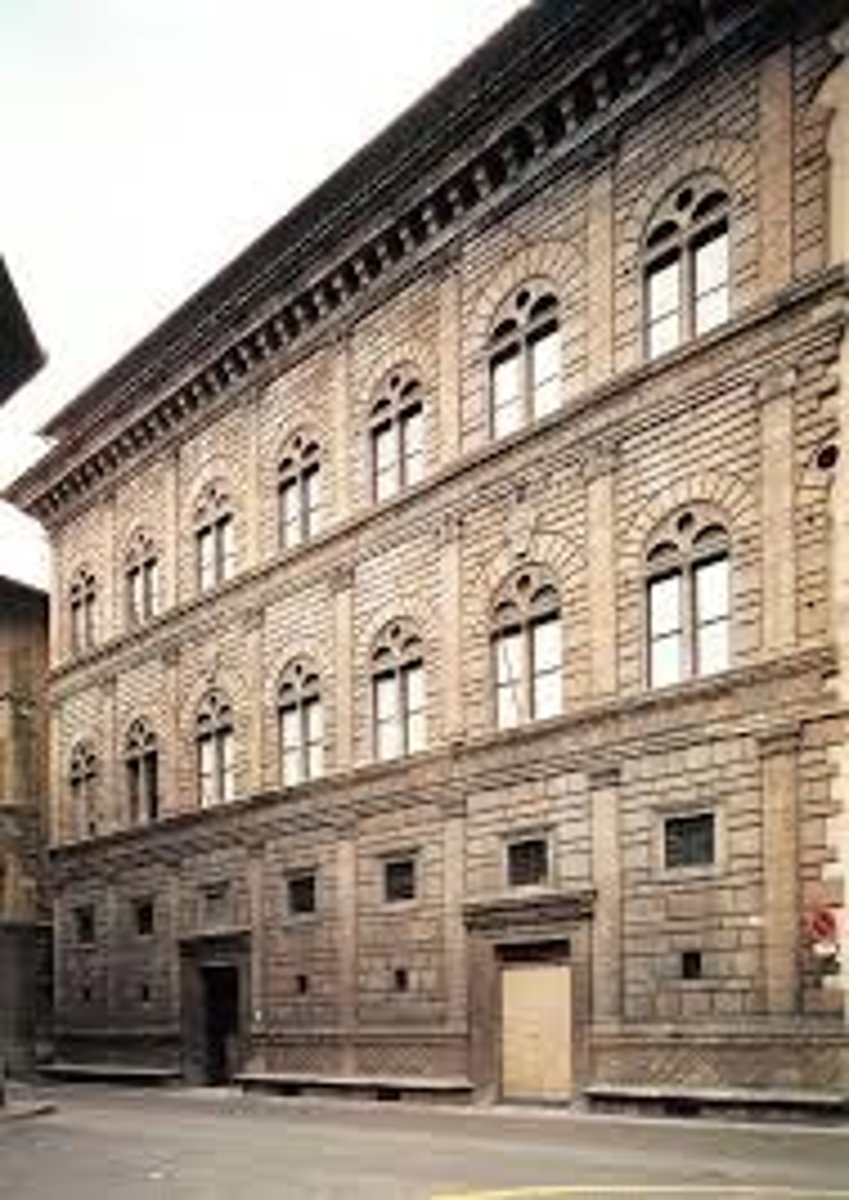
Palazzo Pitti by Luca Pitti
It is the largest palace in Italy aside from the Vatican.
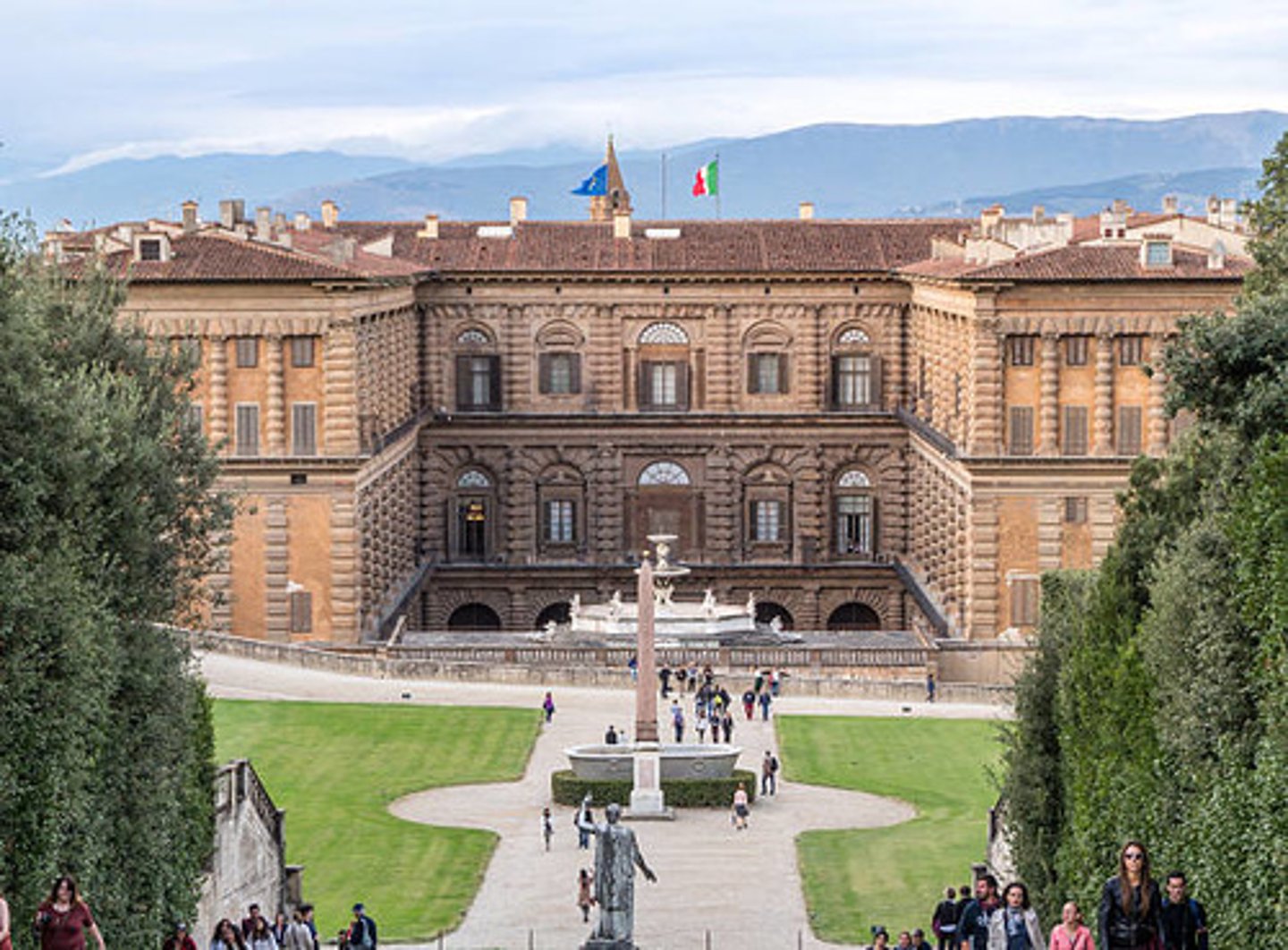
High Renaissance
Represented by a culmination of talent. Placed emphasis on draftsmanship and illusion of sculptural volume in painting.
Leonardo, Michelangelo and Raphael.
The three big names of High Renaissance Art are?
Leonardo da Vinci
Attempted to unite science with art. He used sfumato which translates to smokey in Italian.
Sfumato
A modeling technique which consisted of blurring the sharp
outlines with subtle, tonal gradations imparting a mysterious
enigmatic quality.
Rafaello Sanzio
Studied in Florence. He usually painted beautiful, gentle, calm women in a courteous manner.
Raphael
The School of Athens by
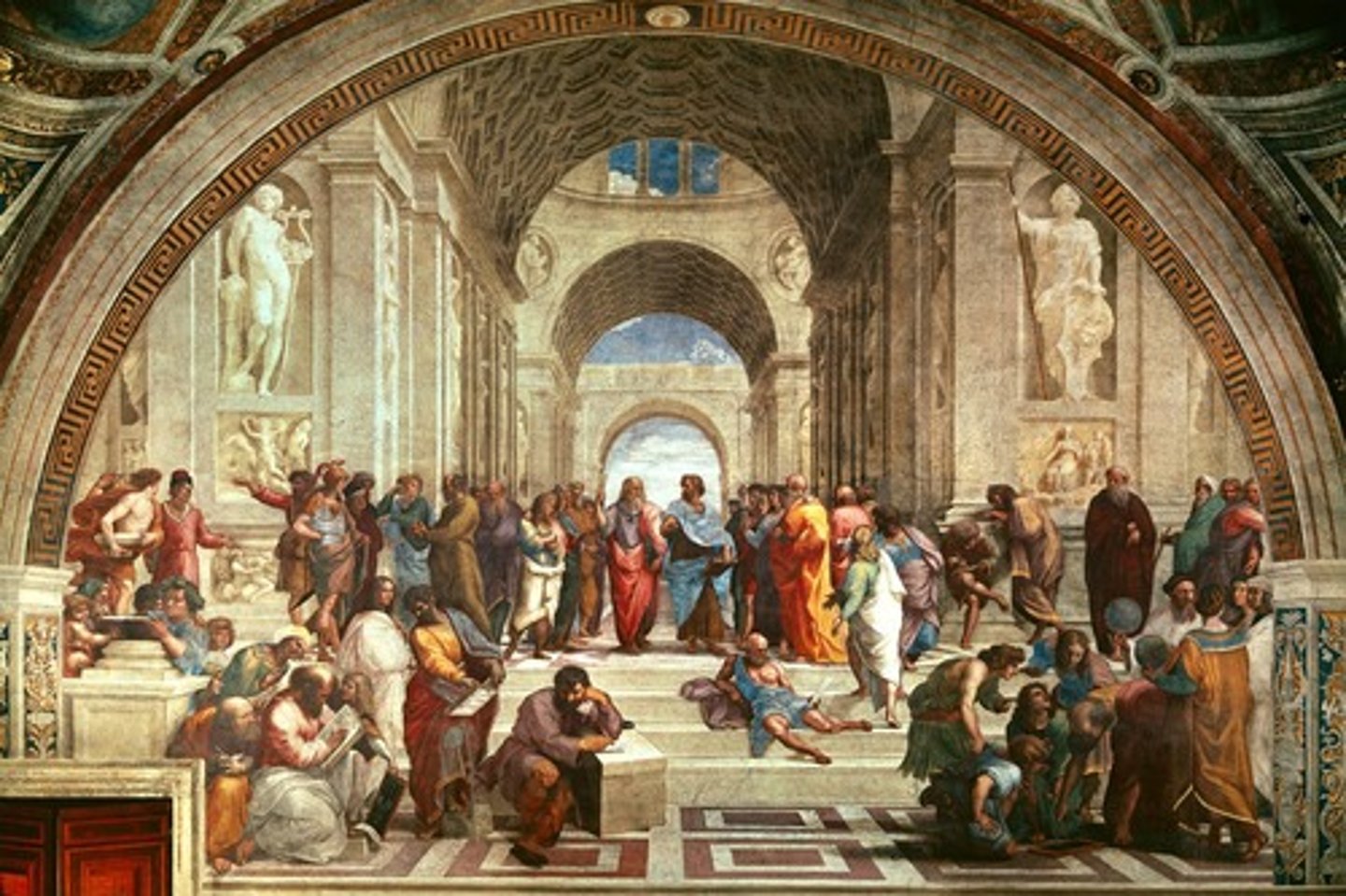
Leonardo da Vinci
The Last Supper by
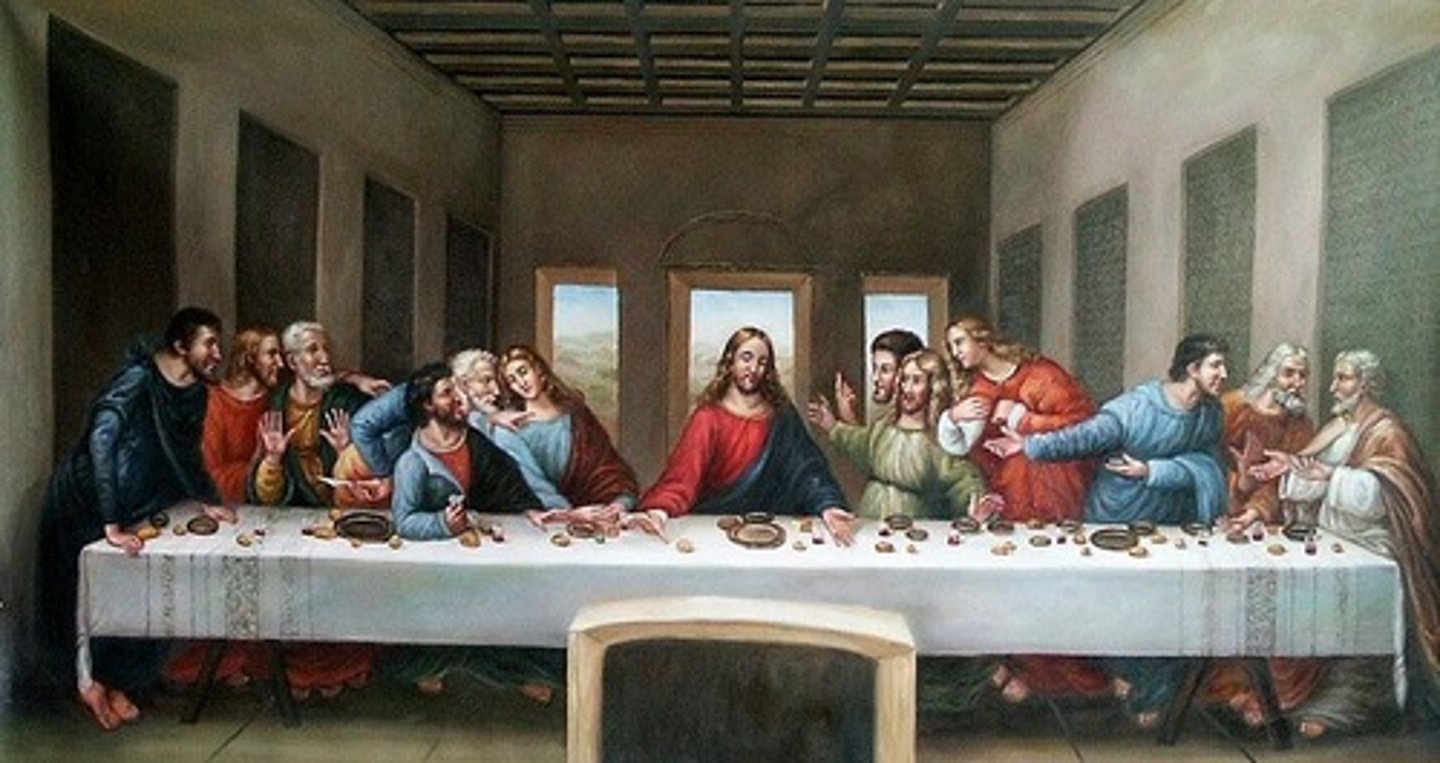
Giorgione
Sleeping Venus by

Giorgione
Most famous of Venetian Renaissance painters.
Michelangelo Buonarotti
He trained in Florence and used the knowledge to glorify God. His style became the foundation of Baroque-Mannerism.
Michelangelo Buonarotti
was more into sculpture than painting because he views sculptures as a higher art form.
Titian
The Venus of Urbino by
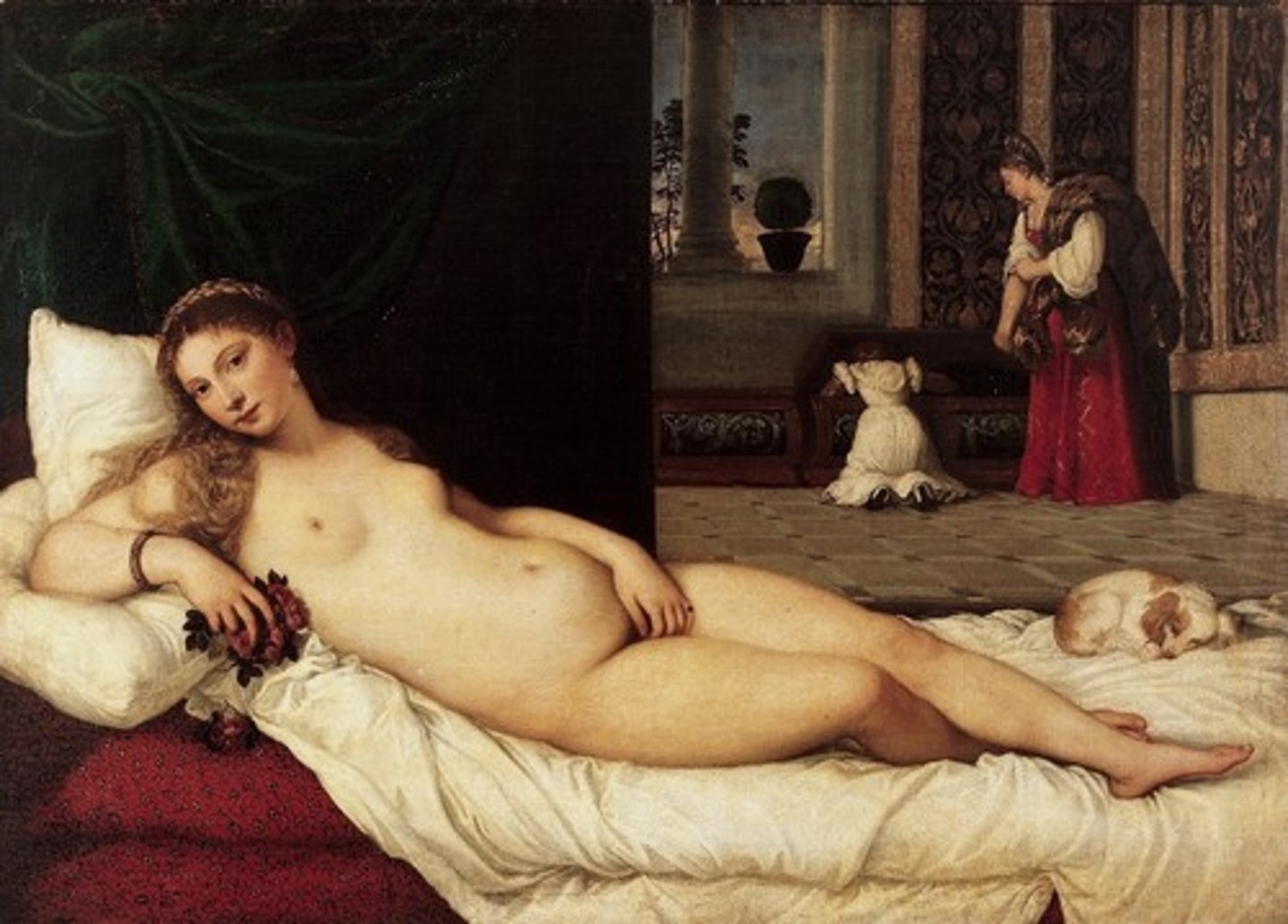
Michelangelo Buonarotti
Pieta by
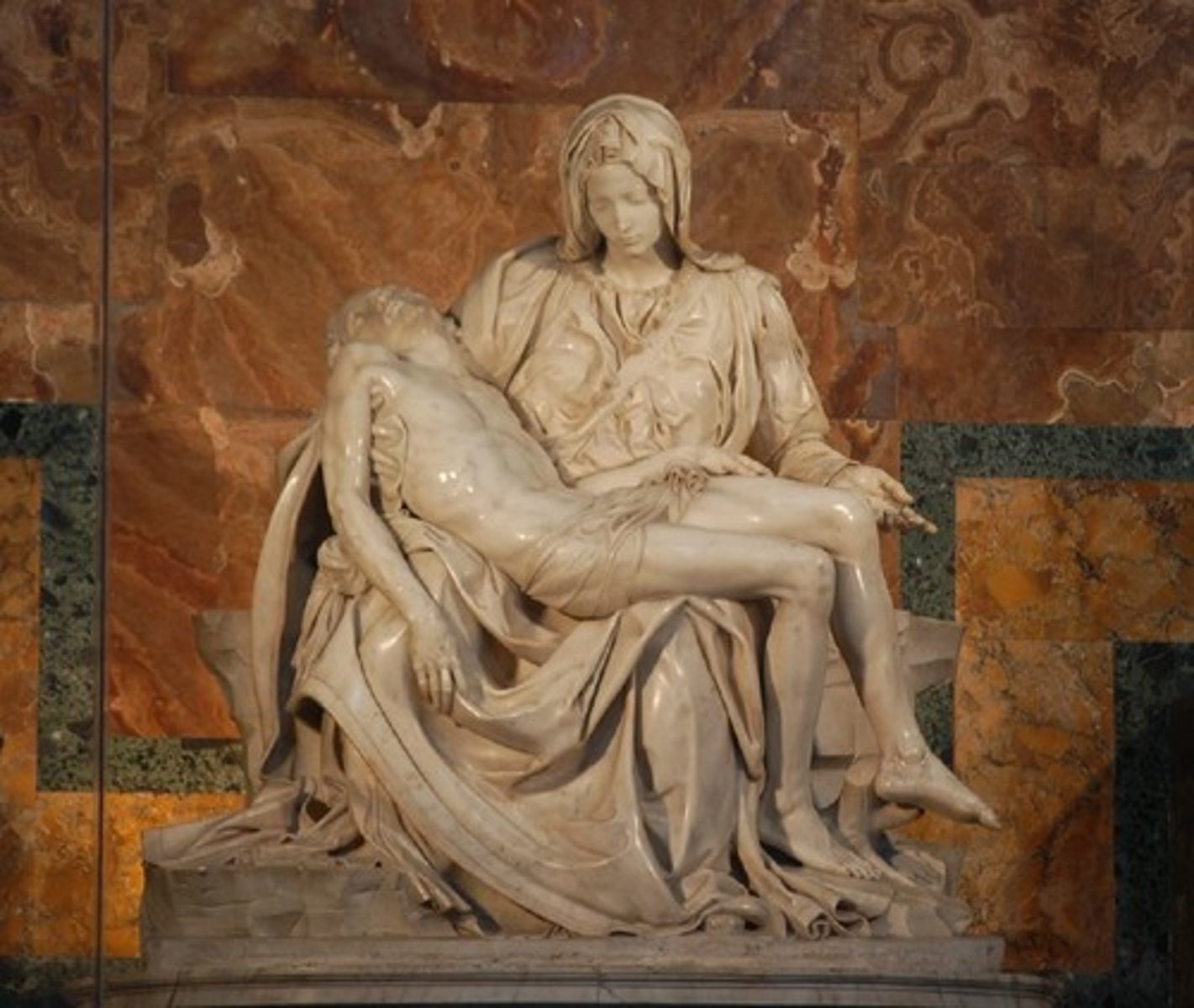
Albrecht Durer
Known as Leonardo of the North. He produced more than a thousand woodcuts and engravings.
Albrecht Durer
Adam & Eve by
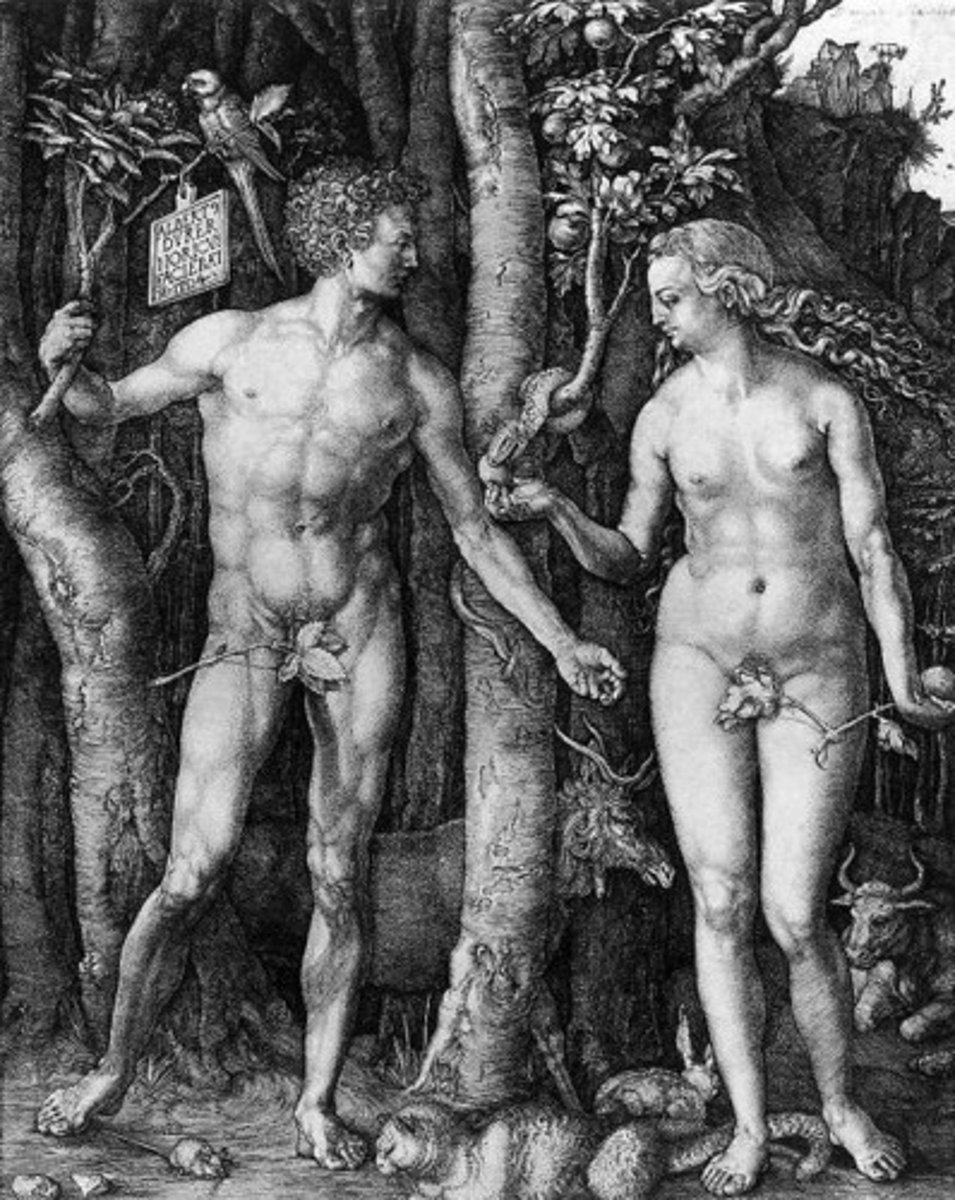
Pieter Bruegel The Elder
The Blind Leading the Blind by
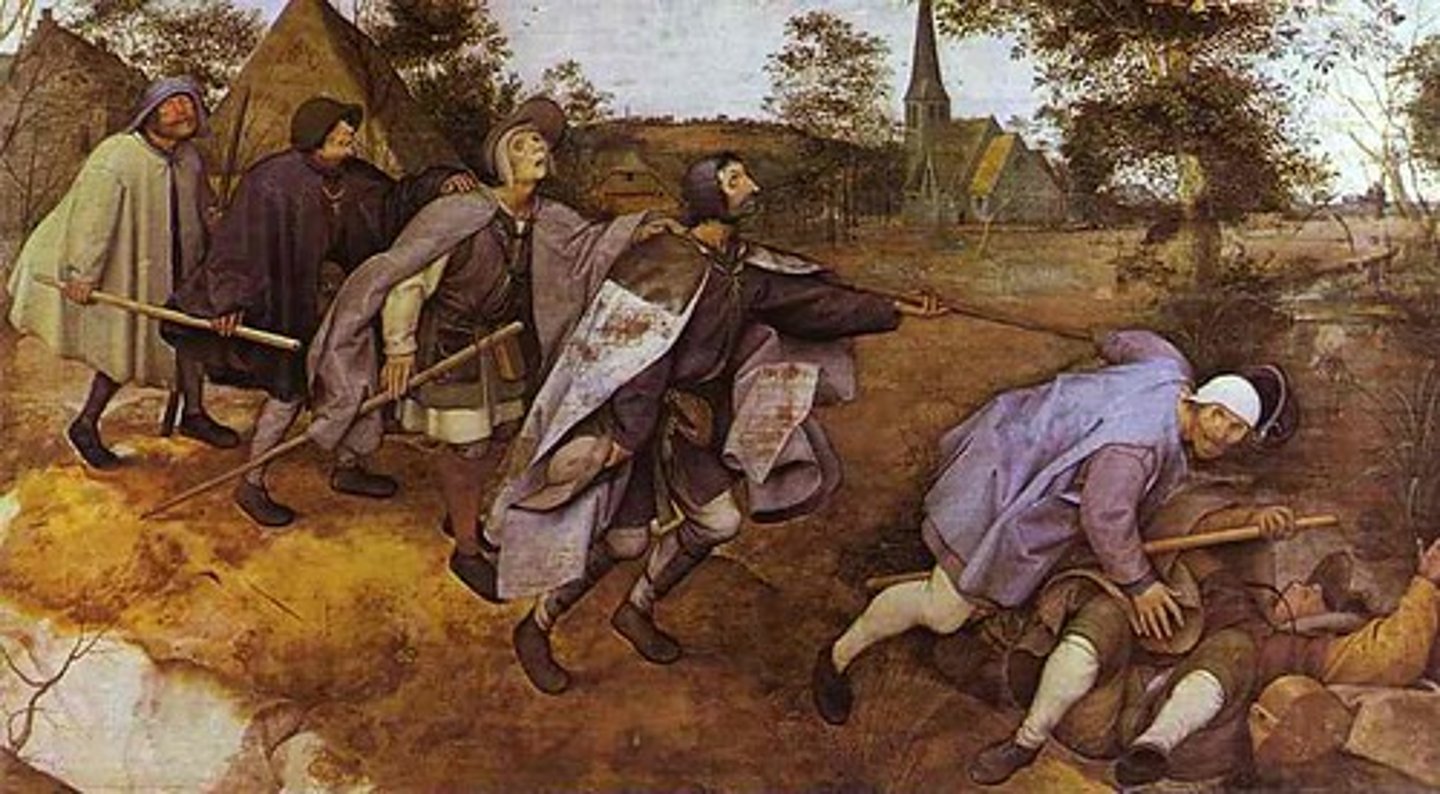
Pieter Bruegel The Elder
The greatest Flemish Painter of the Dutch Renaissance. He is well-off but chose to immerse himself with peasants and is known for genre paintings.
Donato Bramante
Tempietto by
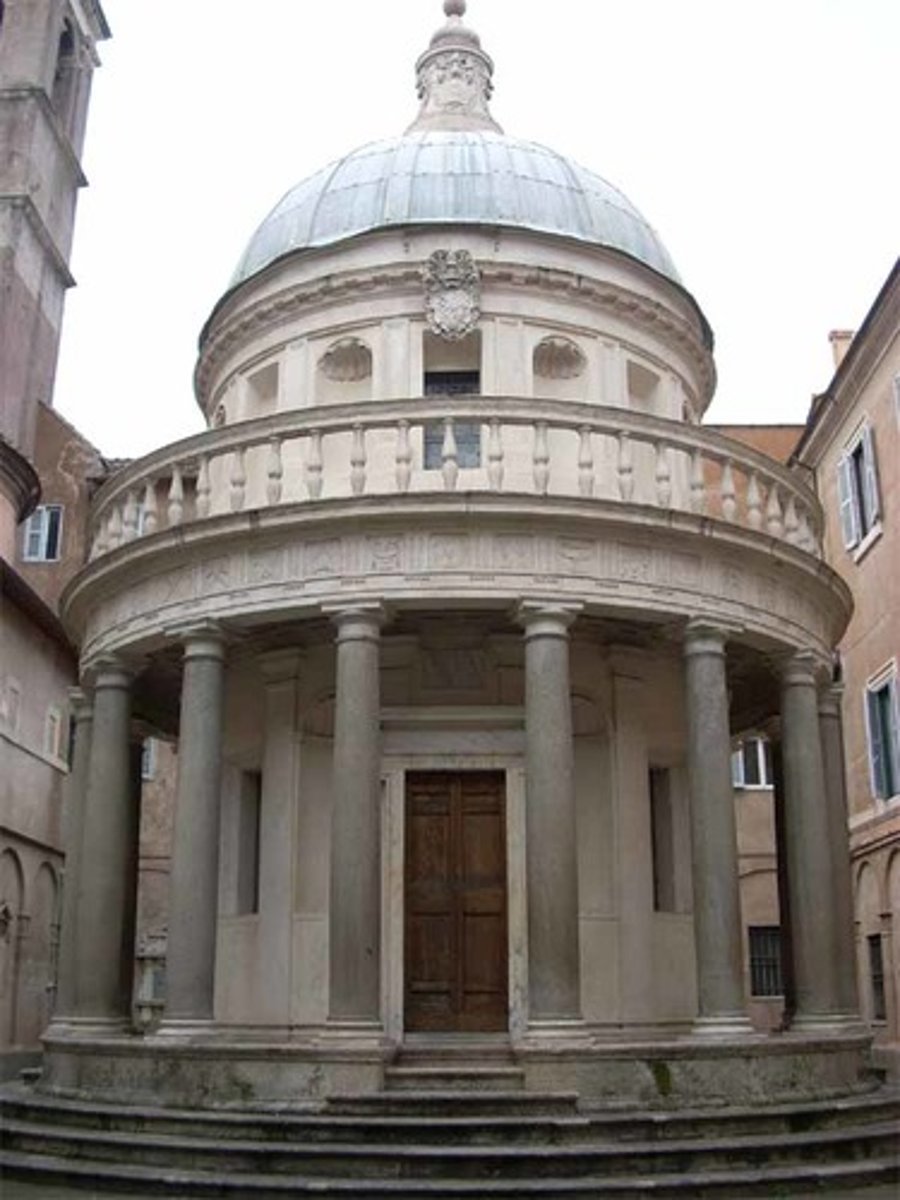
Tempietto
Meaning small temple, marks the spot of St. Peter's crucifixion.
Measures 15 ft. in diameter and is reminiscent to the circular planned building.
Capitoline Hill by Michelangelo
Composed of the Palace of the Senate by the right, the Capitoline Museum at the top, the conservatory at the left and the statue of Marcus Aurelius at the middle.
Mannerism
A term applied to exaggerated styles, striking visual effects by over muscular or elongated figures set in extravagantly contorted panes.
Mannerism
The start of scientific achievements by Galileo with his theory that the Earth is not flat and Newton and his theory of gravity.
Jacopo Pantormo
The Descent From The Cross by

Parmigianino
Madonna of the Long Neck by
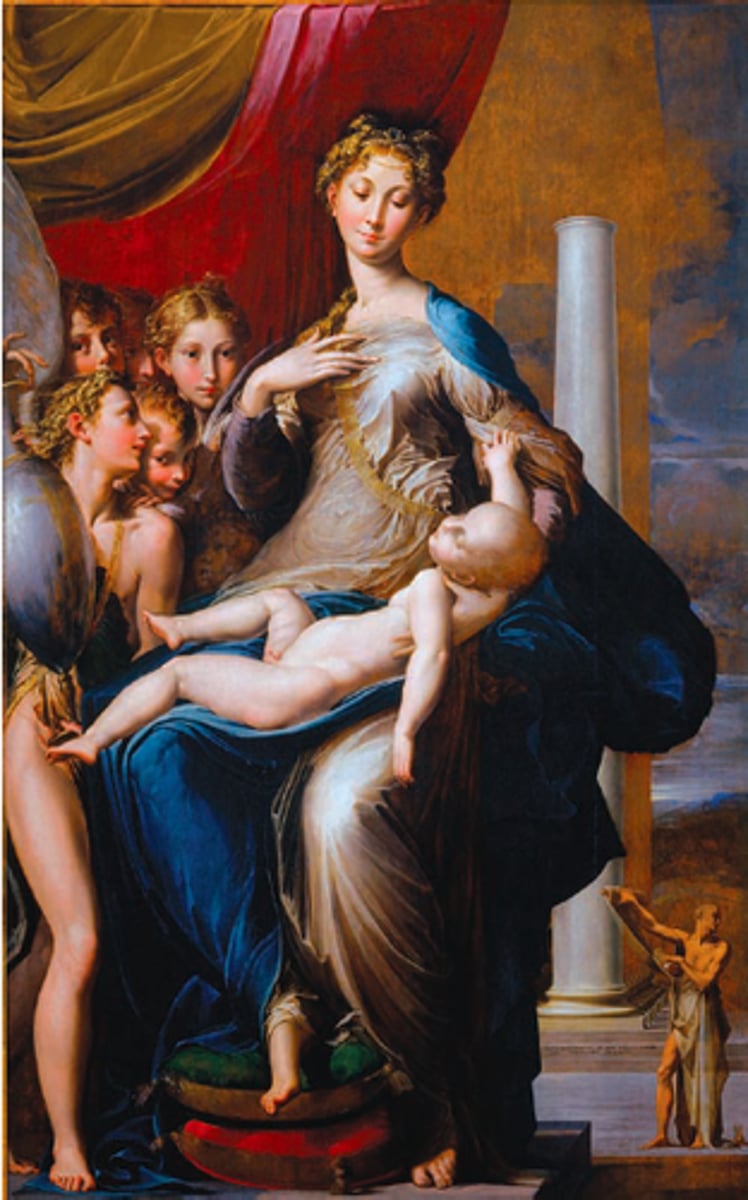
Tintoretto
The Last Supper by
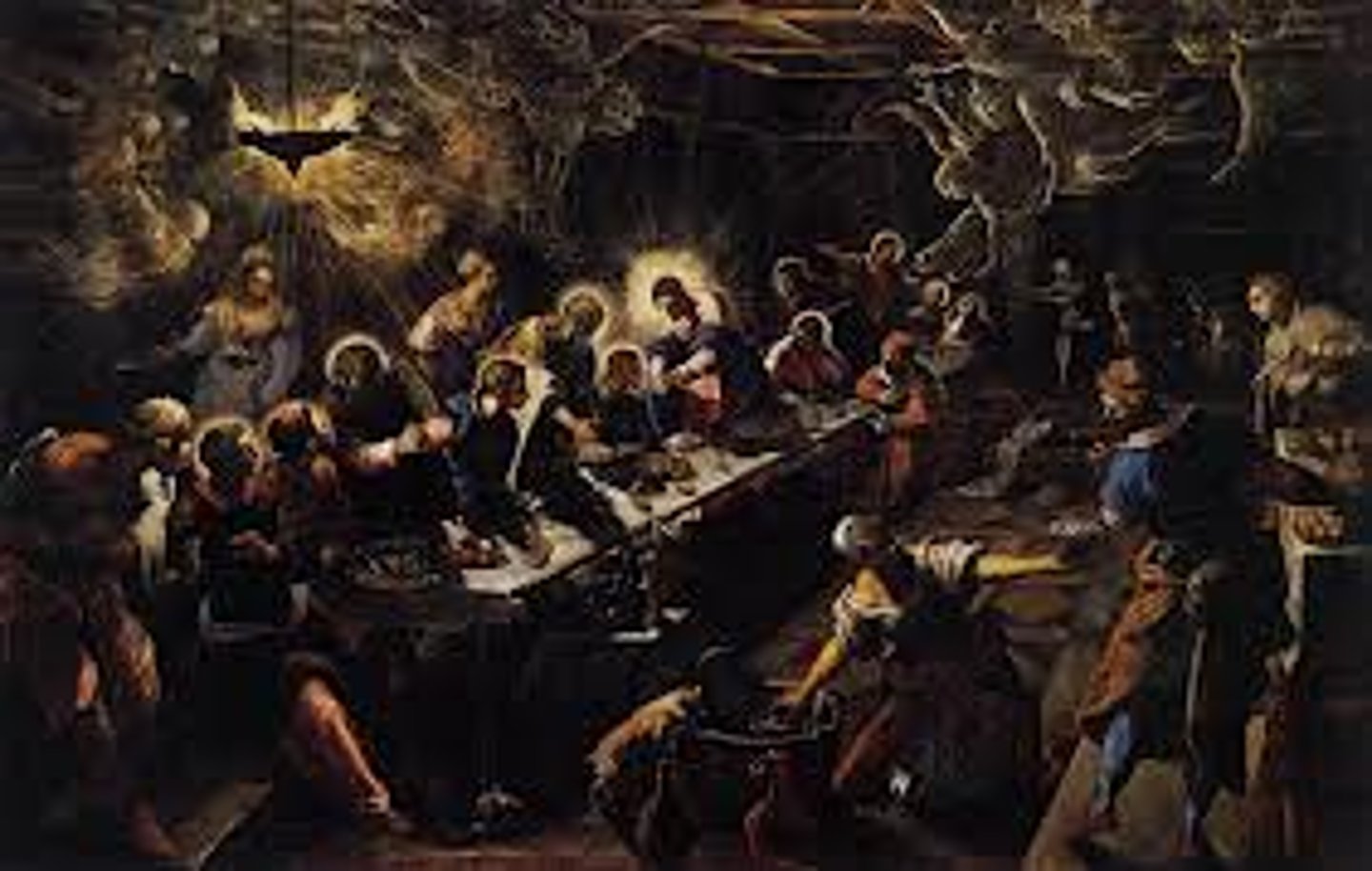
Tintoretto
Venice's Master of Mannerism. He was termed IL Furioso because of his energy in painting and is known for his dramatic use of perspectival space and special lighting effects.
Figura Serpentinata
The S line in Mannerist paintings which translates to serpent.
Veronese
The Marriage Feast at Cana by

Veronese
Known as a supreme colorist and uses illusionistic decorations in both fresco and oil. His works are in dramatic and colorful Mannerist style.
Agnolo Bronzio
He excelled in cool mannerist portraits.
Michelangelo
The Last Judgment by
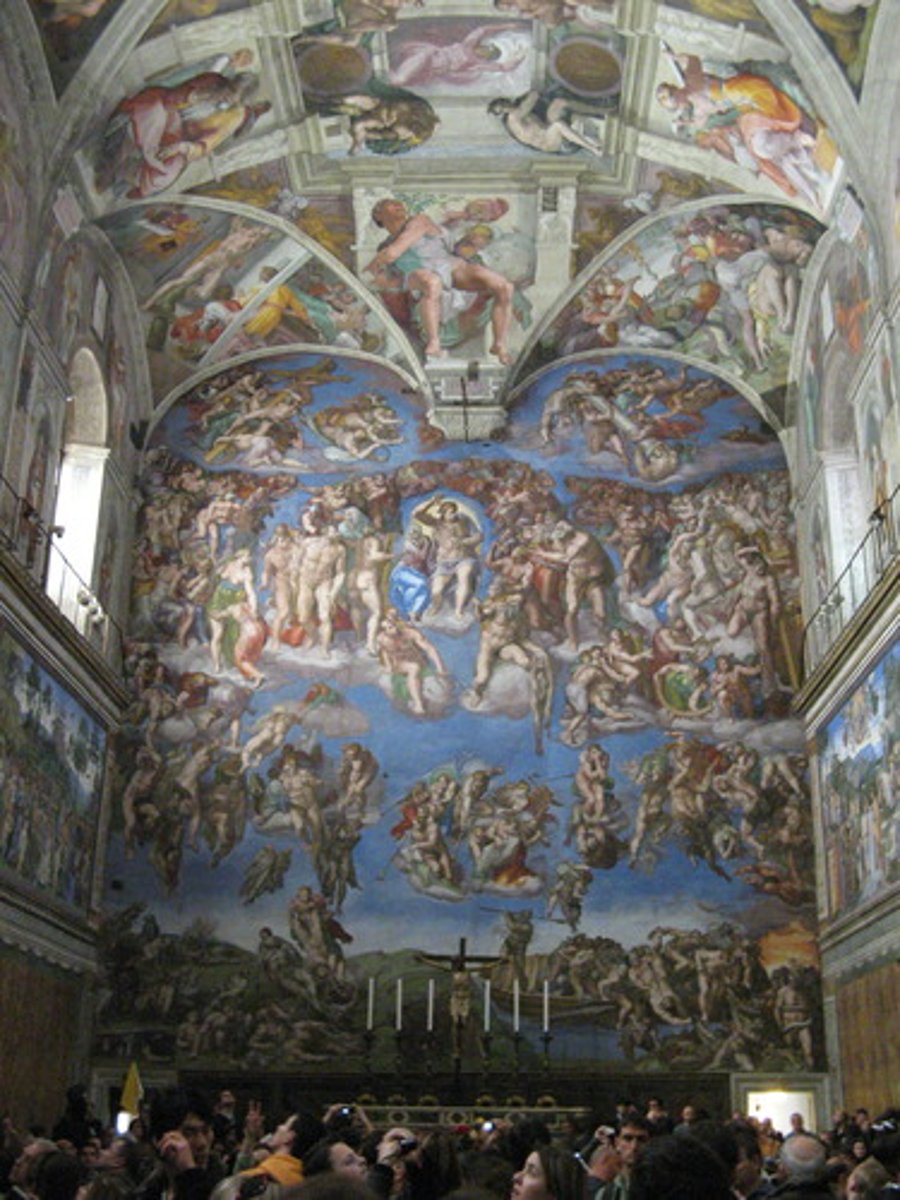
Andrea Palladio
A mannerist architecture. Villa Rotonda "Villa Capra" by
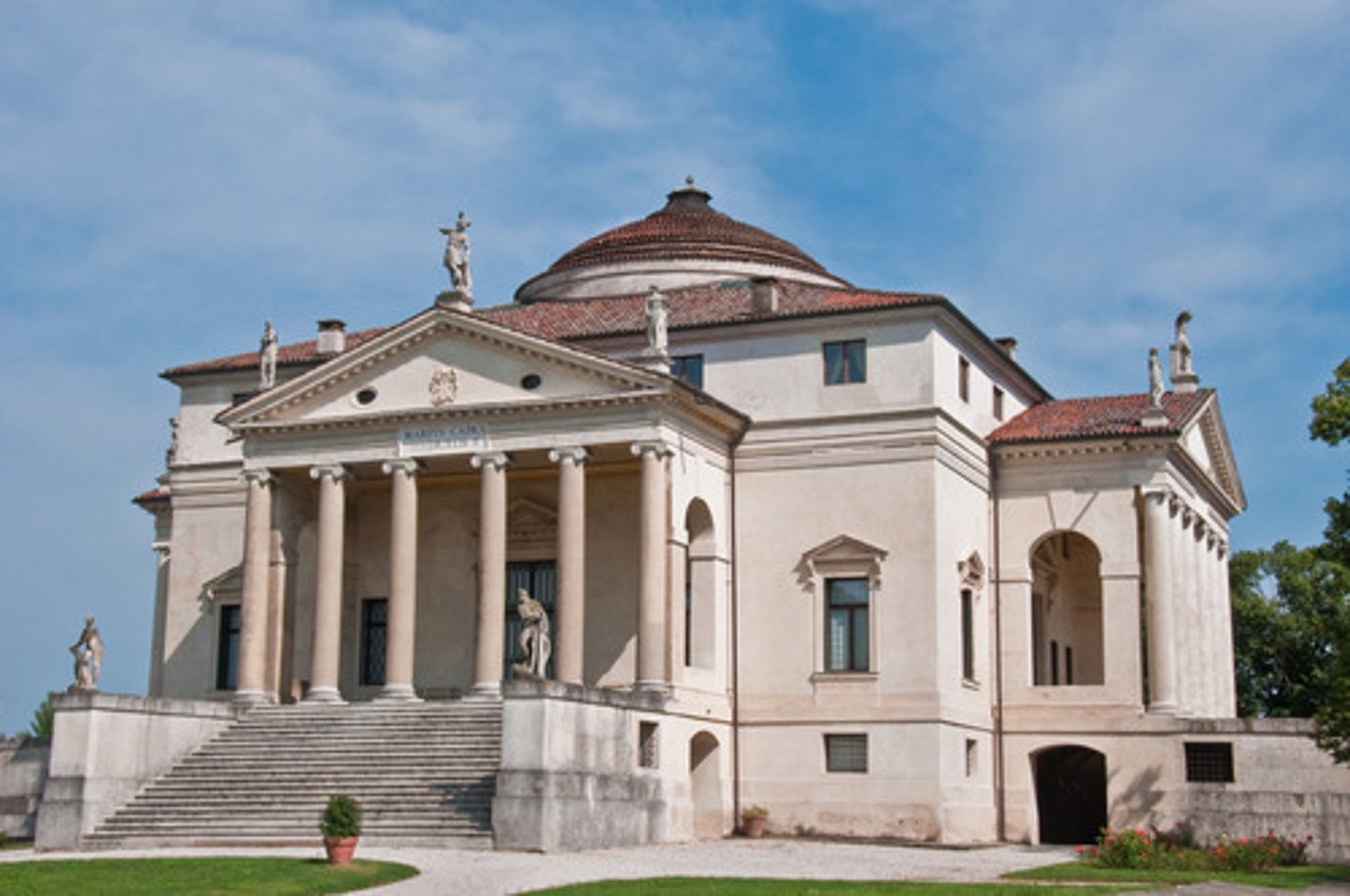
Andrea Palladio (1508-1580)
The greatest architect of 16th Century Italy.
Baroque Style
Artists placed emphasis on emotion and dynamism and there was a deliberate lack of clarity when it comes to themes.
Baroco
A Portuguese term for imperfect pearl.
The Council of Trent
Gave the Church the power to persecute non-Christians.
The Edict of Nantes
Allowed other religions to practice.
The Royal Academy, France
Founded by the royal minister Jean Batiste Colbert to manipulate images for political advantages.
Caravaggio
The Entombment of Christ by

Michelangelo Caravaggio
He used dramatic, realistic and chiaroscuro technique. He chose ordinary people as the figures in his religious works.
Tenebrism
Also called the 3rd lighting technique, comes from the word
tenebroso meaning to obscure. It is the use of a very dark overall tonality of the painting.
Rembrandt van Rijn
Greatest genius of the Dutch school who painted portraits and scenes of genre and religious subjects.
Rembrandt lighting
A type of low-key lighting technique that shows graded transitions from light to dark with shadows in warm colors. Features a warm white drama.
Jan Vermeer
Woman Holding Water Pitcher by
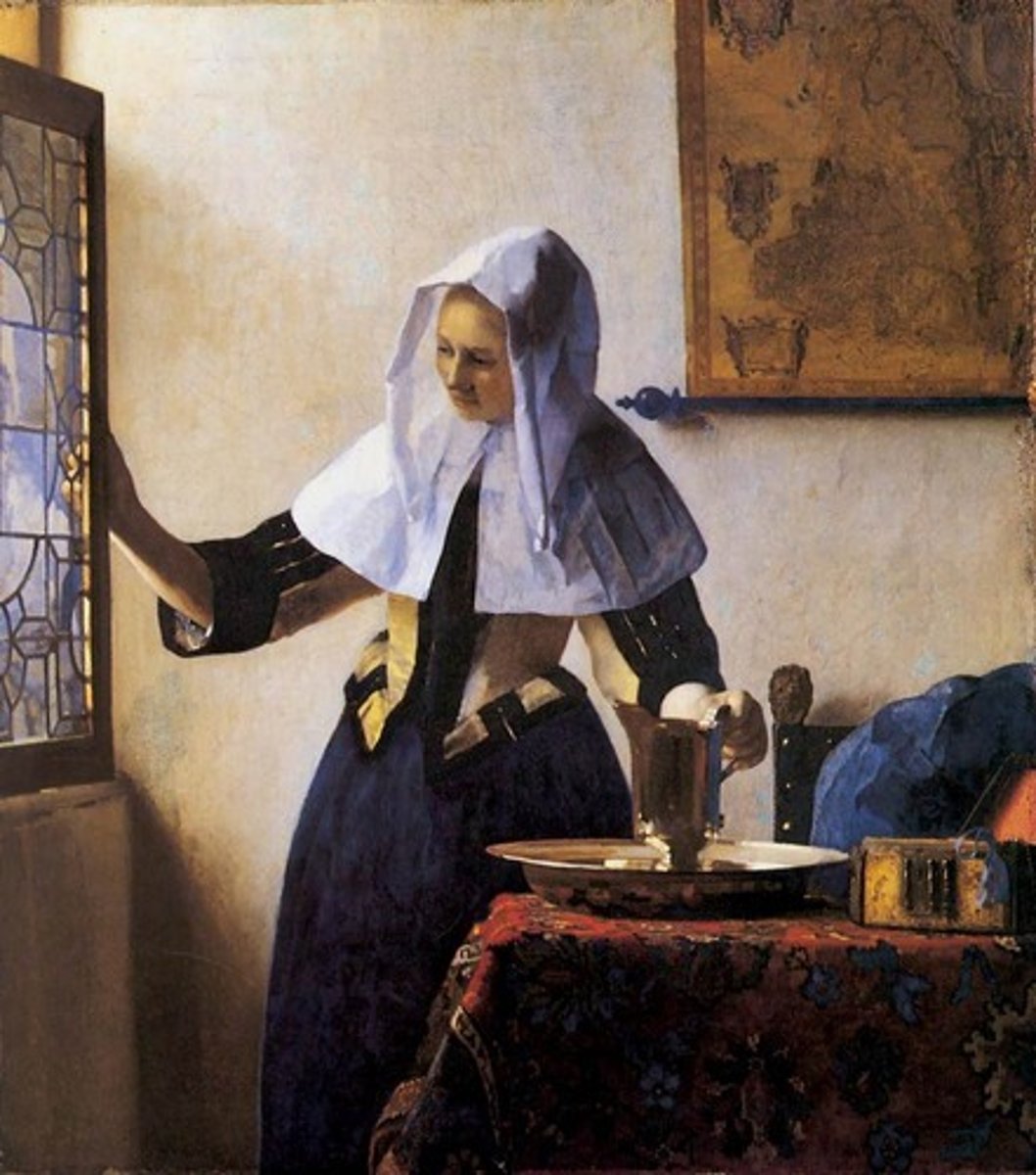
Jan Vermeer
Little Dutch Master. His usual subjects focus on women doing household chores. The subjects are also seen standing next to a window.
Peter Paul Rubens
Samson and Delilah by

Peter Paul Rubens
Greatest Flemish painter of Baroque. He was able to produce about 2000 paintings.
Rubenesque
Means voluptuous and muscular figures as the beauty ideal.
Imprimatura
The combination of light effects and color also known as chromatic intensity.
Anthony Van Dyck
Earl of Warwick by
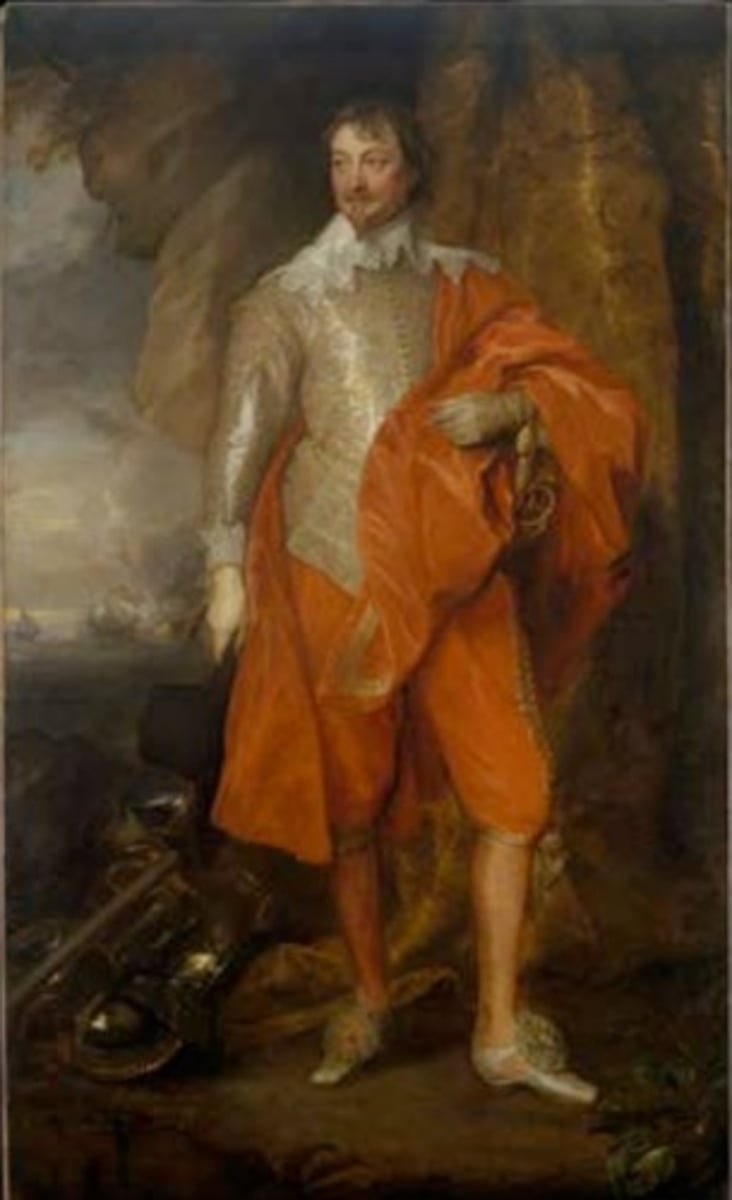
Anthony Van Dyck
He specialized in aristocratic portraiture that featured exquisite detailing of silken fabrics, fine laces and trimmings.
Gianlorenzo Bernini
The Ecstasy of St. Teresa
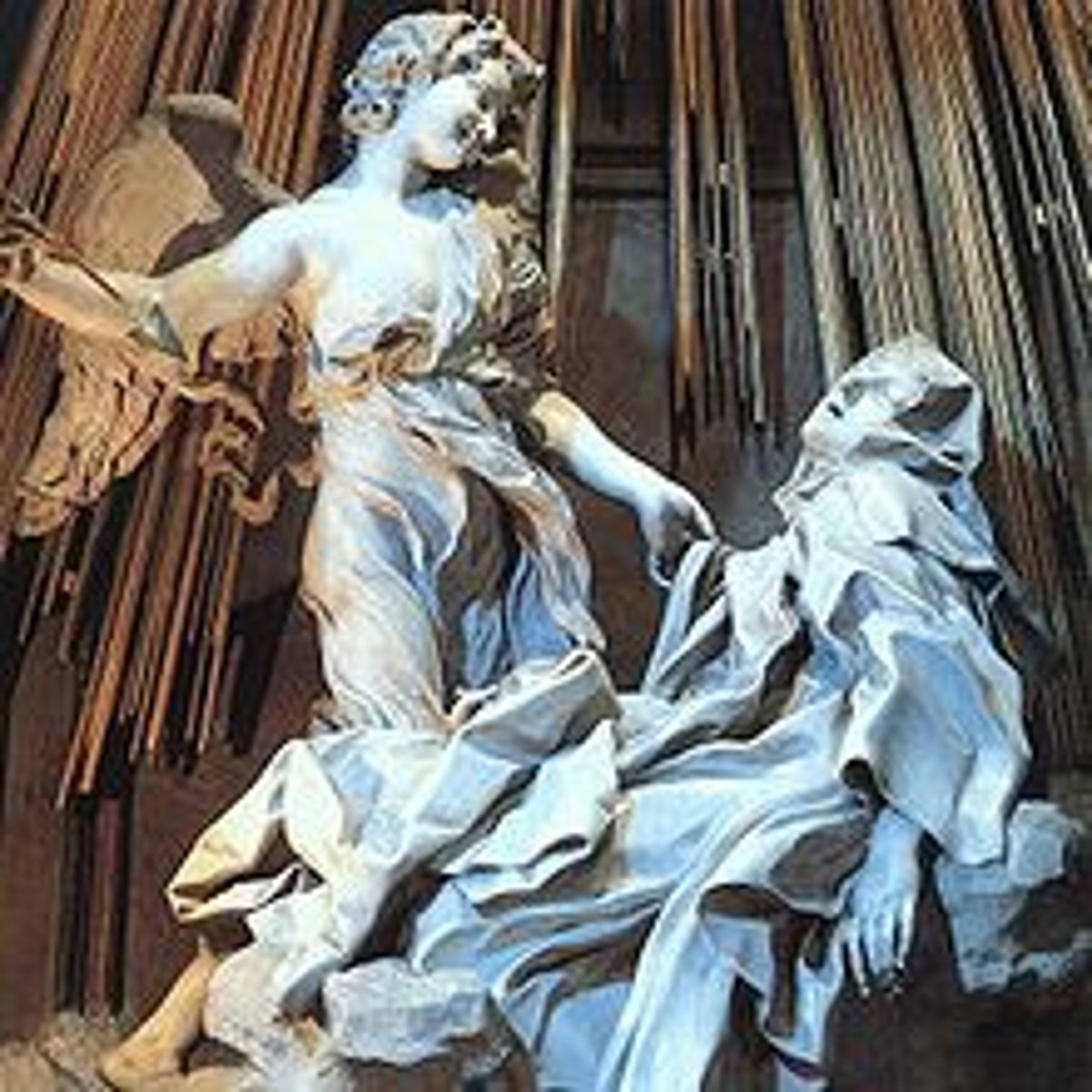
Gianlorenzo Bernini
David
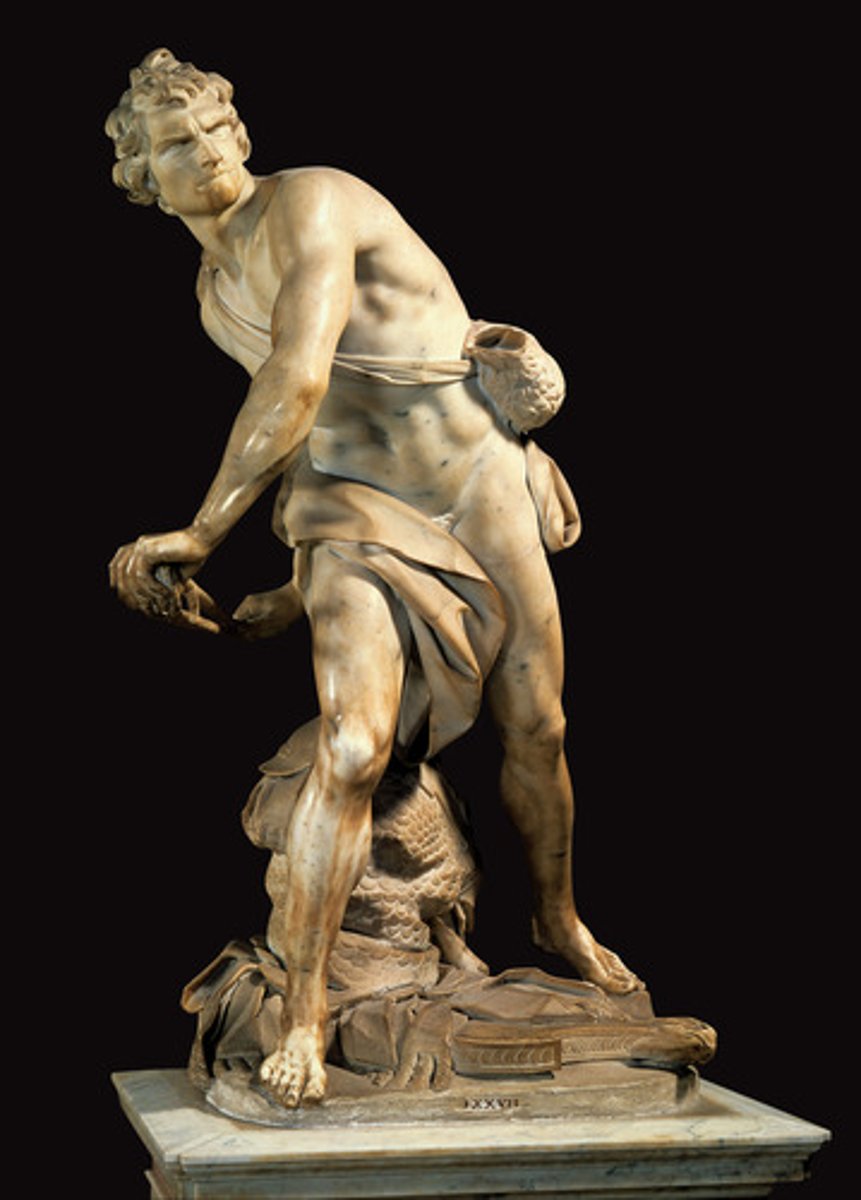
Gianlorenzo Bernini
Mainly a sculptor, he was influenced by Michelangelo and used dynamism to portray figures.
Baroque Architecture
Characterized by free and sculptural use of classical orders and ornaments and dynamic opposition of spaces.
Solomonic Columns
Named Solomonic because it was believed to be derived from
Solomon's temple. These are columns with a twisted shaft.
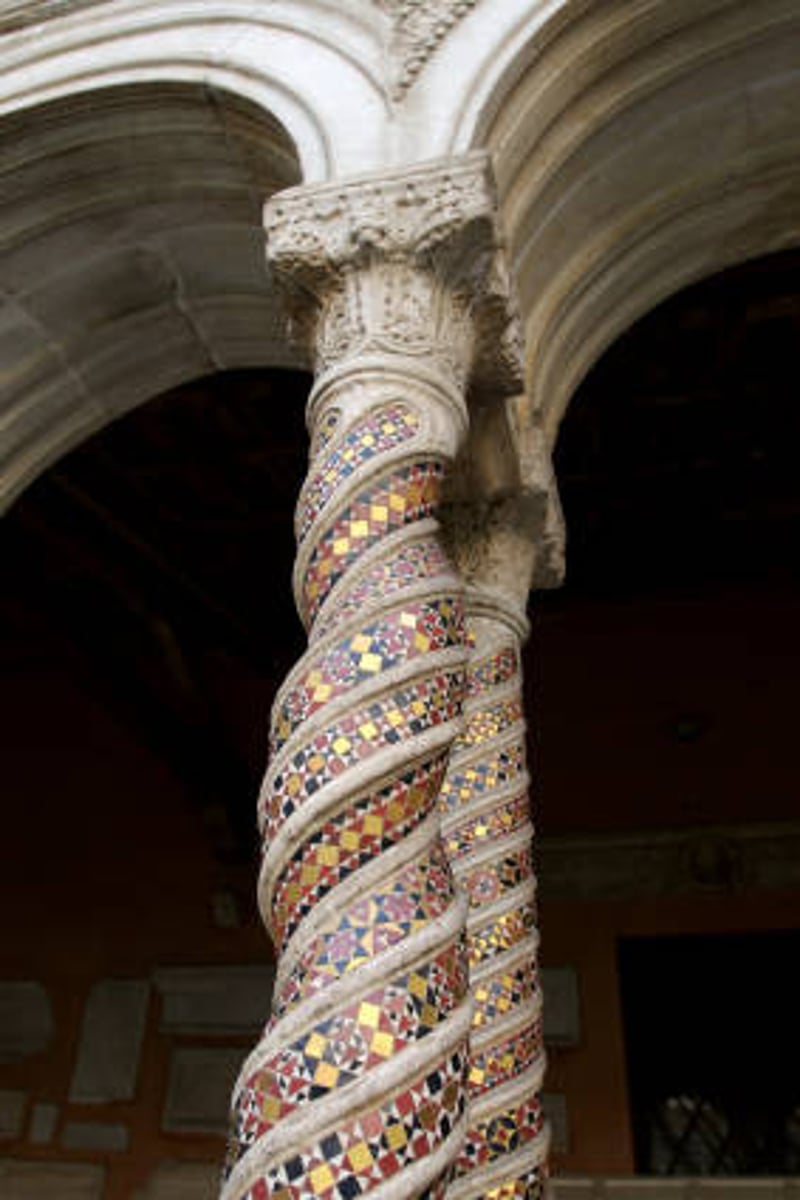
St. Peter's Basilica by Bernini
Façade was made by Carlo Maderna while the baldachino and piazza by Bernini. The Piazza was surrounded by 284 columns in the Tuscan Style. The basilica was also topped with various popes.
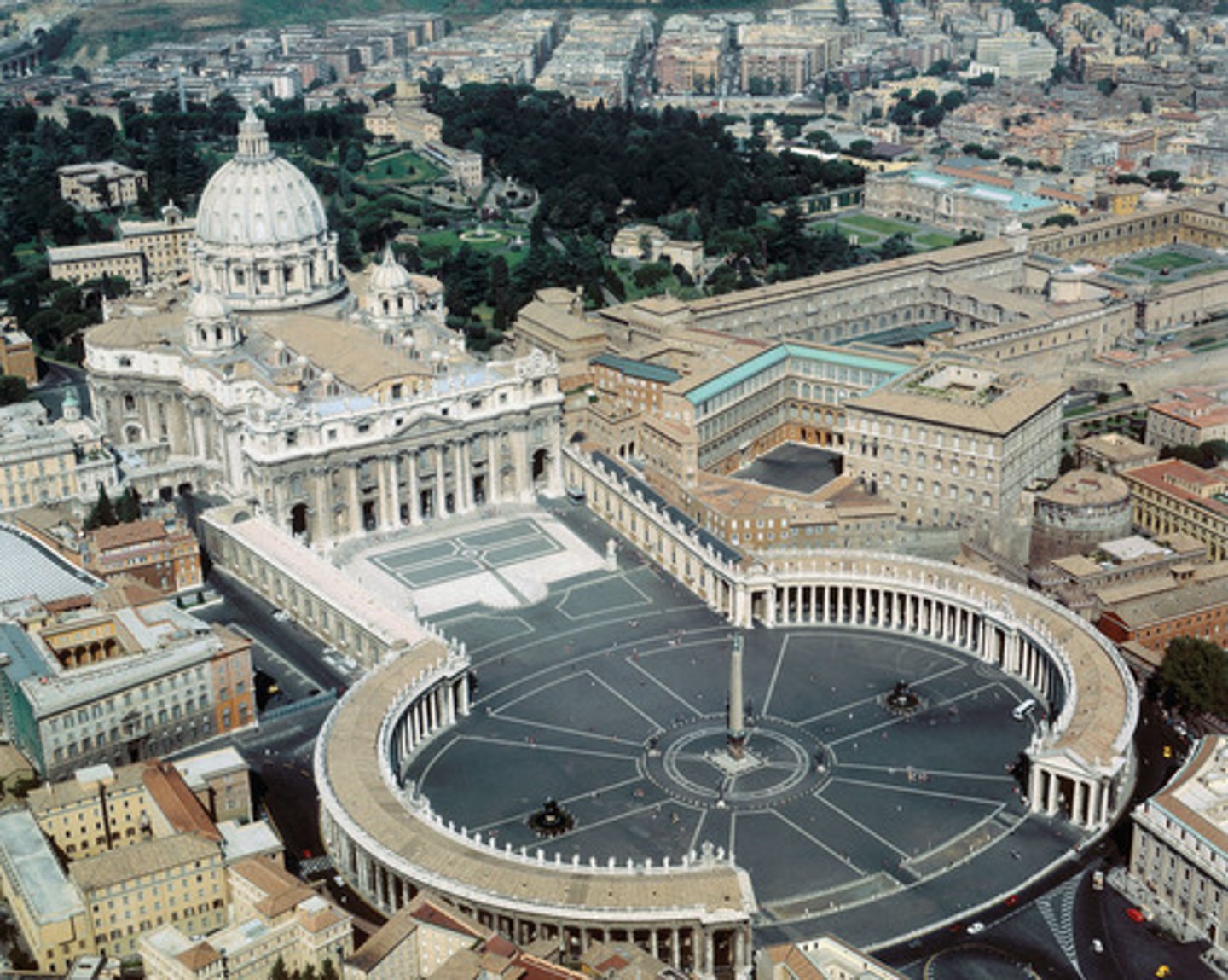
Francesco Borromini
San Carlo Alle Quattro Fontane
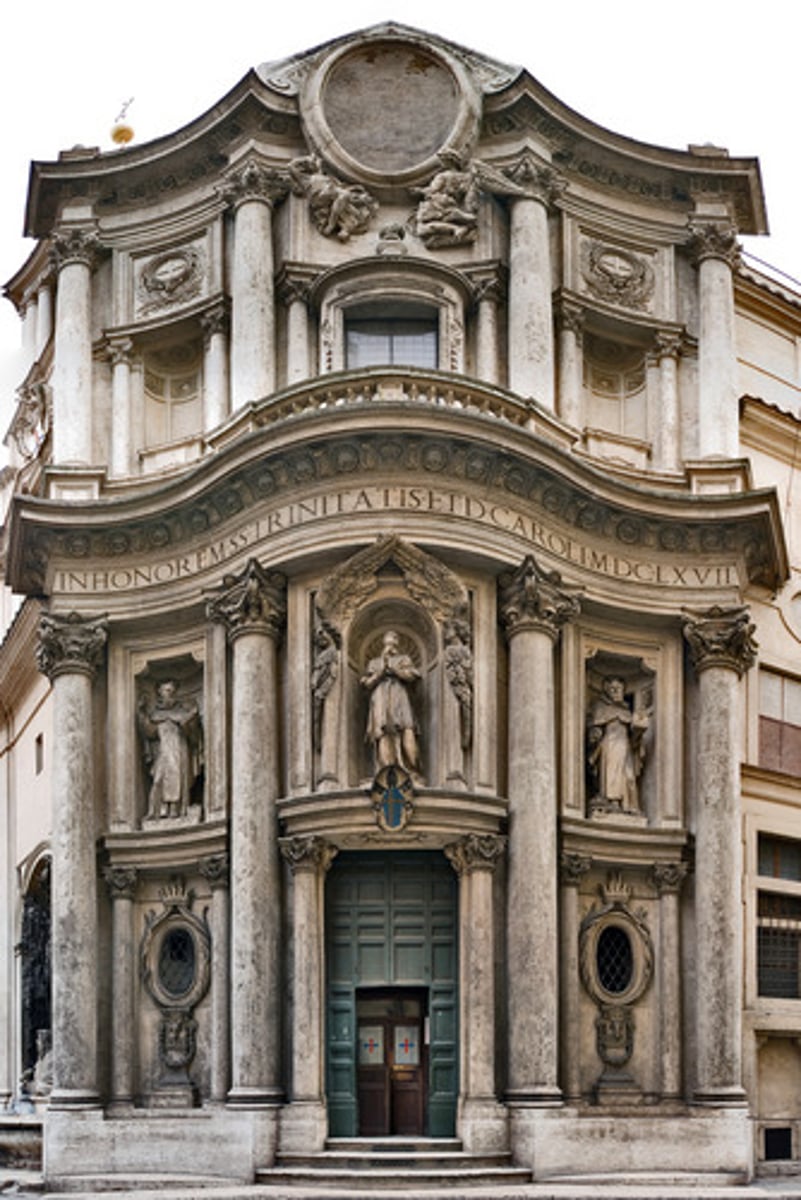
Church of Il Gesu
The mother church of the Society of Jesus or the Jesuits. The façade is considered the first truly baroque façade.
Giacomo Vignola
Church of Il Gesu
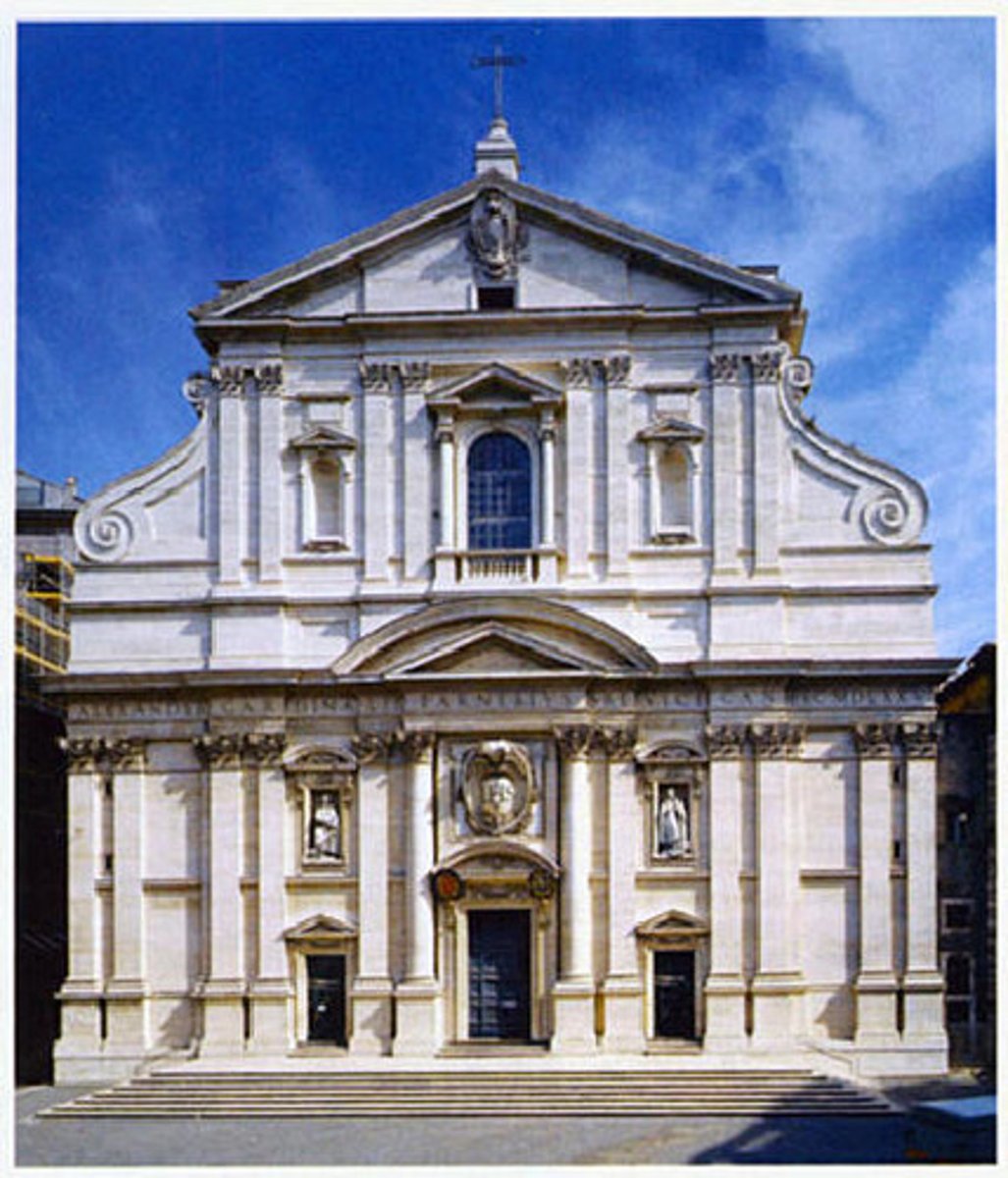
Bernini
Baldacchino over the tomb of St. Peter
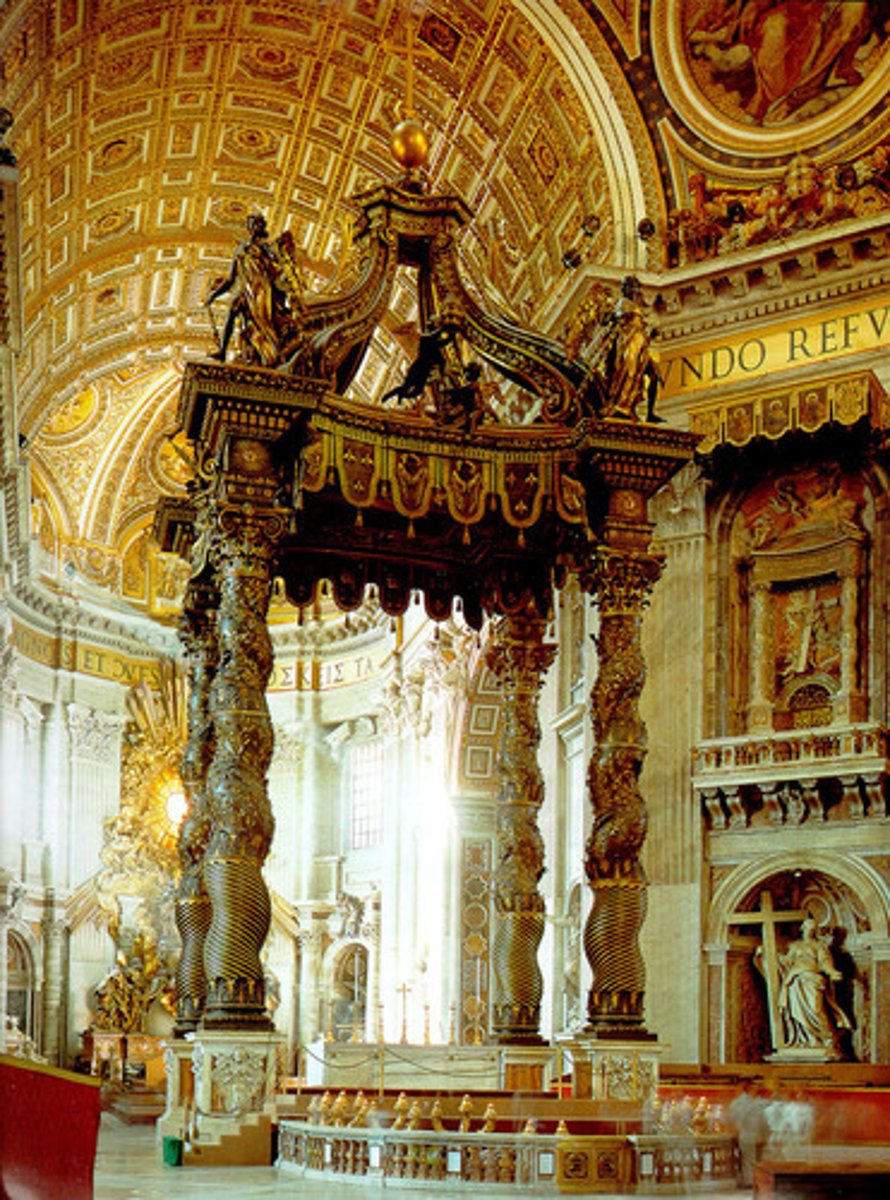
Santa Maria della Salute
Roman Catholic Church which had a lot of sculptural figures. It was made round to symbolize the womb of Mary.
